Your cart is currently empty!
Category: Uncategorized
-
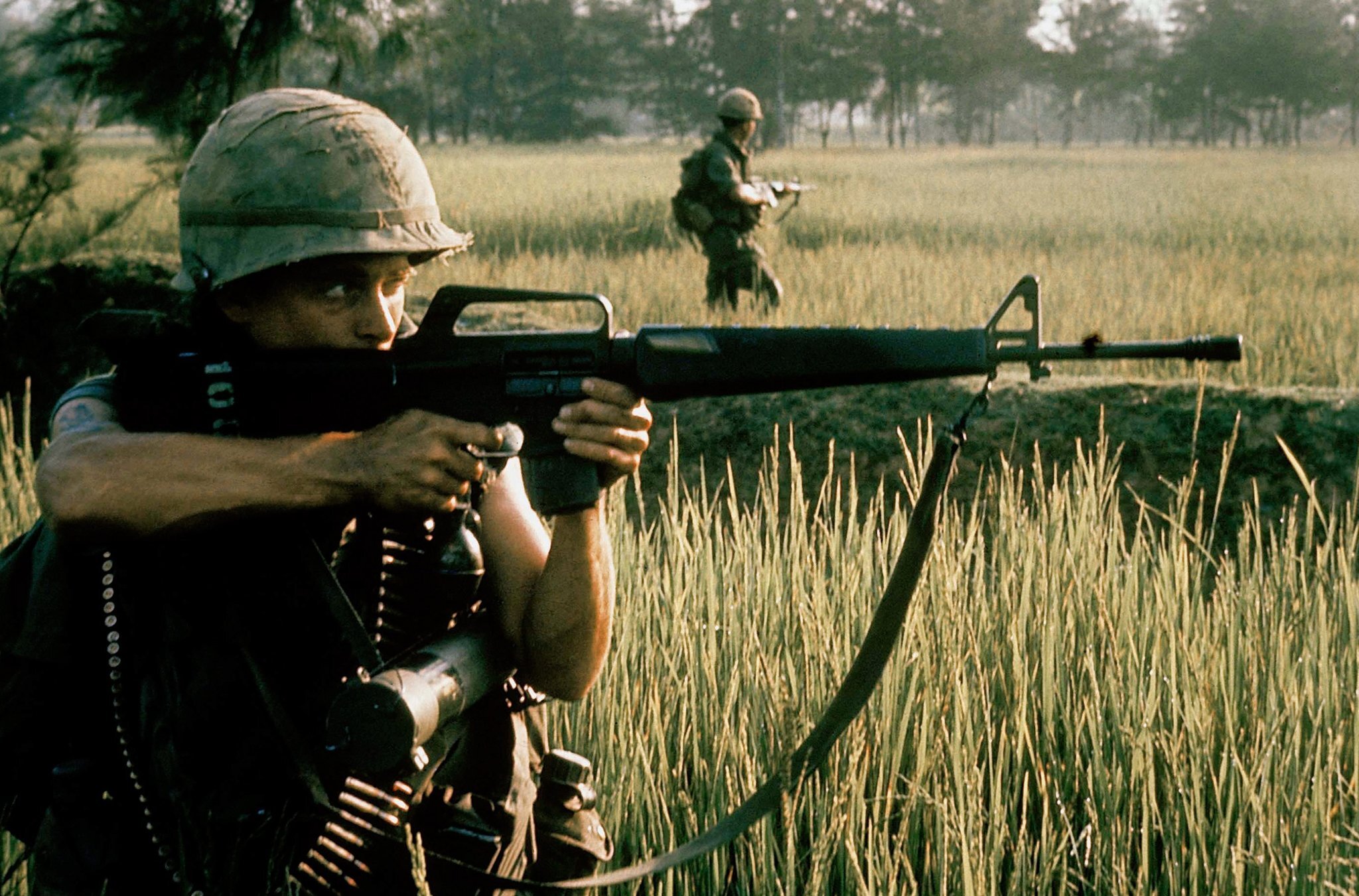
Feeling nostalgic: read up on the M16A1 Service Rifle
The M16A1 service rifle (Rifle, Caliber 5.56 mm, M16) is a lightweight, air-cooled, shoulder-fired weapon derived from the ArmaLite AR-15 rifle, intended for use by the U.S. military. It originally entered service in 1967 as an improvement over the M16 rifle, which was introduced in 1964 as the XM16E1. It was chambered in 5.56×45mm NATO and could fire with one shot per trigger pull or in fully automatic mode by means of a three-position selector lever.
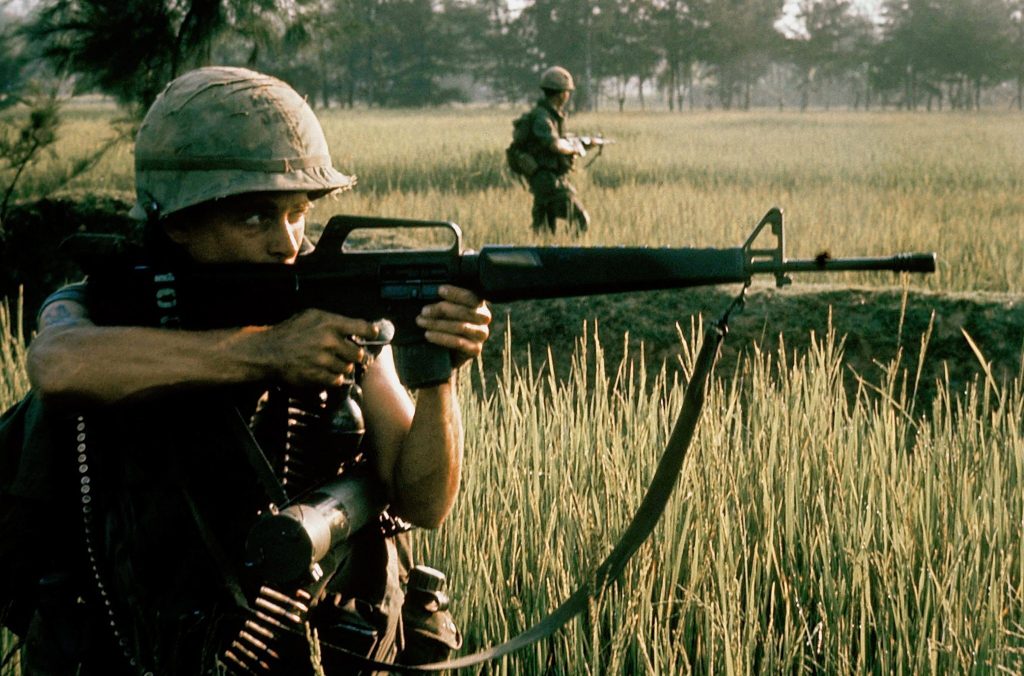
By 1969, the M16A1 superseded the M14 rifle as the official service rifle of the U.S. military. It remained the official service rifle of the United States Marine Corps until 1983 and the U.S. Army until 1986, when the M16A2 replaced both. World War I to Vietnam: The Genesis of the M16A1
The M16A1 instituted a few significant changes over the M16. The changes included a forward-assist, chrome-lined chamber and bore, and an improved flash hider. Most importantly, a regimen for weapon maintenance was developed that had been lacking at the time. However, the Black Rifle needed to overcome many hurdles to get to the top spot over 55 years ago. To understand the story of the M16A1, you have to go back to the end of World War 1, believe it or not. The U.S. Army Ordnance Department began conducting tests at Aberdeen Proving Ground in 1928.
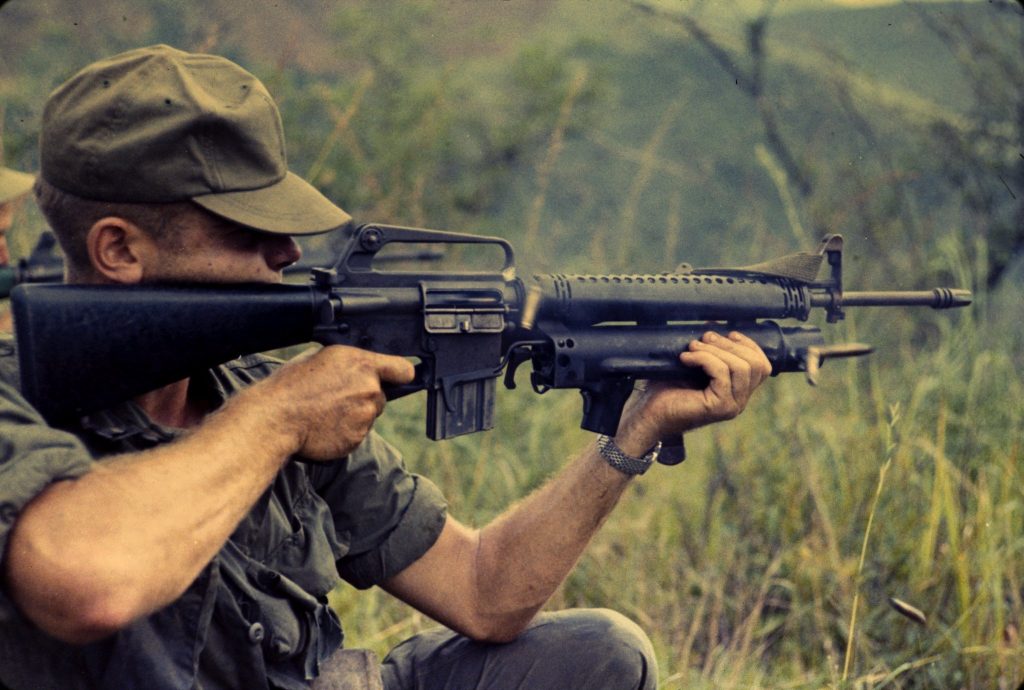
Short mags and full-auto fire meant many reloads. An early version of the UBGL (under barrel grenade launcher) on this M16A1 makes up for that just a bit! The board recommended that all branches of service should transition to a smaller caliber round than the standard .30 caliber of the time. Combat lethality, weight of the individual cartridge, and a higher rate of fire with less recoil were all cited as reasons for the shift. A 6.8mm or .27 caliber was recommended and subsequently ignored as the Army wanted to stay with the “tried and true” .30 caliber. About 20 years later, after the Second World War, the U.S. military began looking for one sole automatic rifle to replace their current arsenal. However, there was no “One” answer. The M1 Garand proved disastrous in select fire, for example.
The Search for a Replacement
During the Korean Conflict, select-fire M2 carbines replaced the M1A1 Thompson and M3 Grease Gun. However, the .30 carbine round used by these weapons proved to be severely under-powered. The Ordnance Board again concluded that an intermediate-sized round was needed in the form of a small-caliber, high-velocity cartridge. They wanted it bigger than the pistol-inspired rounds such as .30 Carbine, but heavy–like the 45 ACP. Others asked for a round that was shorter and lighter than the .30-06 chambering of the M1 Garand.
Unfortunately, General Grade officers who were veterans of World War II and/or Korea still insisted on developing a powerful .30 caliber round. They wanted this round to see dual use in the development of rifle and belt-fed machine guns at the time. This led to the design of the 7.62×51 mm NATO cartridge.
The U.S. Army solicited different rifles for testing in order to replace the M1 in .30-06 Springfield. The Springfield Armory submitted the T44E4 and heavier T44E5. These were updated versions of the M1 Garand chambered in 7.62×51 mm NATO. Fabrique Nationale (FN) submitted the company’s FN FAL as the T48. A relatively new aerospace company called ArmaLite submitted several prototype rifles known as the AR-10 in late 1956.
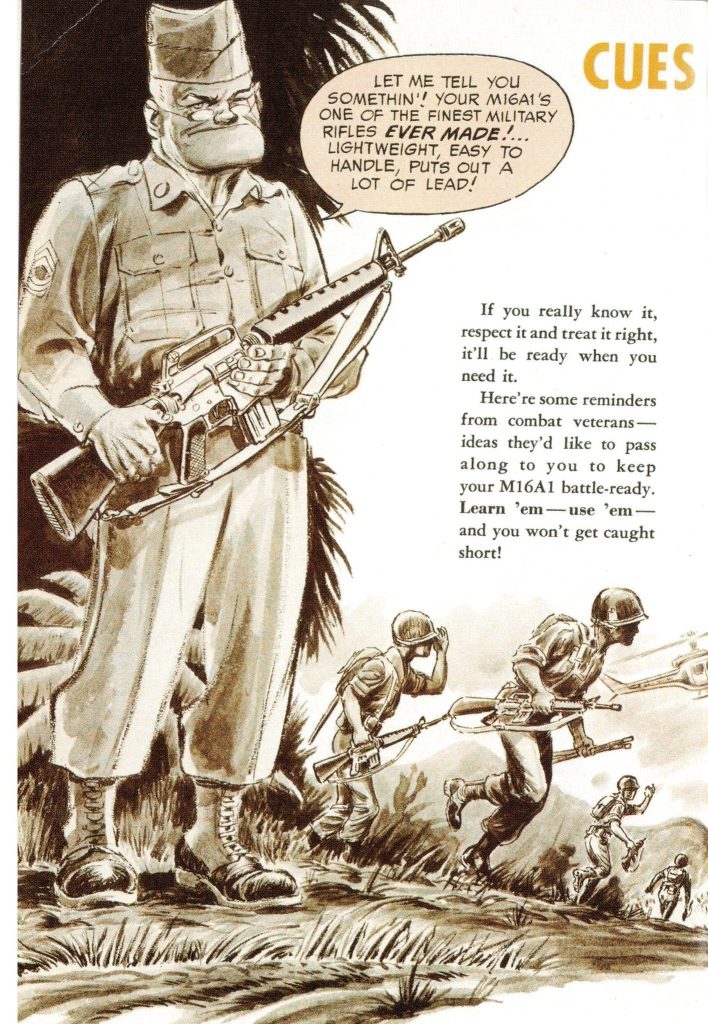
Winning over hearts and minds required some propaganda. Though the M16A1 and other rifle systems were probably more effective. Armalite’s AR-10 may have been the most radical of the group. These high-tech rifles had a very unique yet innovative design. They were built on aluminum alloy receivers, and were fitted with synthetic stocks and hand guards. The AR-10 had a rugged set of elevated sights and boasted an adjustable gas system.
The upper and lower receivers of the final prototype had a front hinge and rear take-down pin. The charging handle was mounted on the top of the upper receiver within the body of the carry handle, which also functioned as the rear sight’s tower.
Due to the use of aluminum receivers and plastic furniture, the AR-10 was an incredibly lightweight rifle, even when chambered in 7.62X51mm NATO. The AR-10 tipped the scale at a mere 6.85 lbs. The men who conducted testing found it to be the “best lightweight automatic rifle ever tested by Springfield Armory.” The Army ultimately chose the Springfield T44, a marginally retooled M1 Garand that accepted a 20-round detachable magazine over the Em-Bloc “clips” and had select fire capability. It entered service as the M14 and its first real look at combat was in the early days of the Vietnam Conflict.
Accounts from the front lines claimed the M14 was impossible to control in full-auto fire. Additionally, the weight of the ammo meant that troops were unable to carry sufficient combat loads to gain fire superiority. Especially when the enemy were armed with either SKS or AK-47 rifles that used shorter and lighter .30 caliber rounds (7.62X39). Although some troops were armed with M2 carbines with a lighter round and had a much more controllable and higher rate of fire, that gun was severely under-powered.
Big Army finally conceded that another rifle featuring an intermediate cartridge was needed. Something like what may have been proposed in 1928, for example.
Enter the M16
The Army found itself reevaluating a 1957 request submitted by the U.S. Continental Army Command (CONARC). They wanted to design a select-fire rifle weighing chambered in the new round based on the .222 Remington Bench Rest cartridge.
Engineers at Remington lengthened the case of the .222 Remington by 2 mm. This aimed to produce ballistics closer to the longer and more potent .222 Remington Magnum.
The projectiles were intended to tumble when contacting a soft target like a human body instead of passing straight through like the .30 Carbine. Some of these supersonic projectiles fragmented and caused huge wound channels. These projectiles were so light that they allowed the rifle to be controllable in full auto fire with a cyclic rate of fire of 600 rounds per minute. The result was the .223 Remington (in civilian parlance) and the 5.56mm NATO designation given the round once it was adopted by the military.
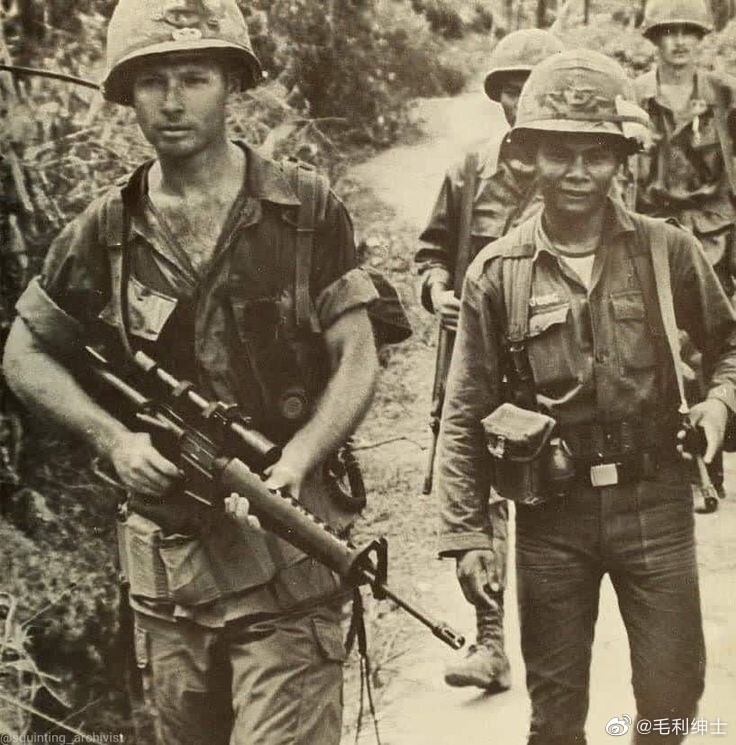
The M116A1 and all the AR15/M16 variants were easier to carry than the M14, and ammo was exceptionally light for a battle rifle. They were also the first of what we’d now call “retro rifles.” This rifle was a smaller version of the Armalite AR-10 and used a similar gas system. It weighed 6 lbs. with a full 20-round magazine. The lighter weight of these rounds allowed the troops to carry more ammunition and have a higher sustained rate of fire in the field. It was dubbed the Armalite AR-15, and its inventor, Eugene Stoner, had unveiled it to the Army at a demonstration at Fort Benning, Georgia, in May of 1957.
The following year, the Army’s Combat Developments Experimentation Command ran war games by arming squads of soldiers with the issued M14 and the AR-15. This testing resulted in the command recommending the adoption of a lighter-weight, smaller-caliber rifle over the M14.
Once again, ignoring this test, the Powers That Be declared that all service rifles and machine guns had to use the same ammunition and ordered full production of the M14.
Despite that, advocates for the AR-15 courted Air Force Chief of Staff General Curtis LeMay. After conducting similar testing to what the Army did, the U.S. Air Force adopted the AR-15 as its service rifle and ordered 8,500 rifles with 8.5 million rounds of ammunition. The Defense Advanced Research Projects Agency (DARPA) subsequently acquired 1,000 AR-15s and shipped them to be tested by the Army of the Republic of Vietnam (ARVN).
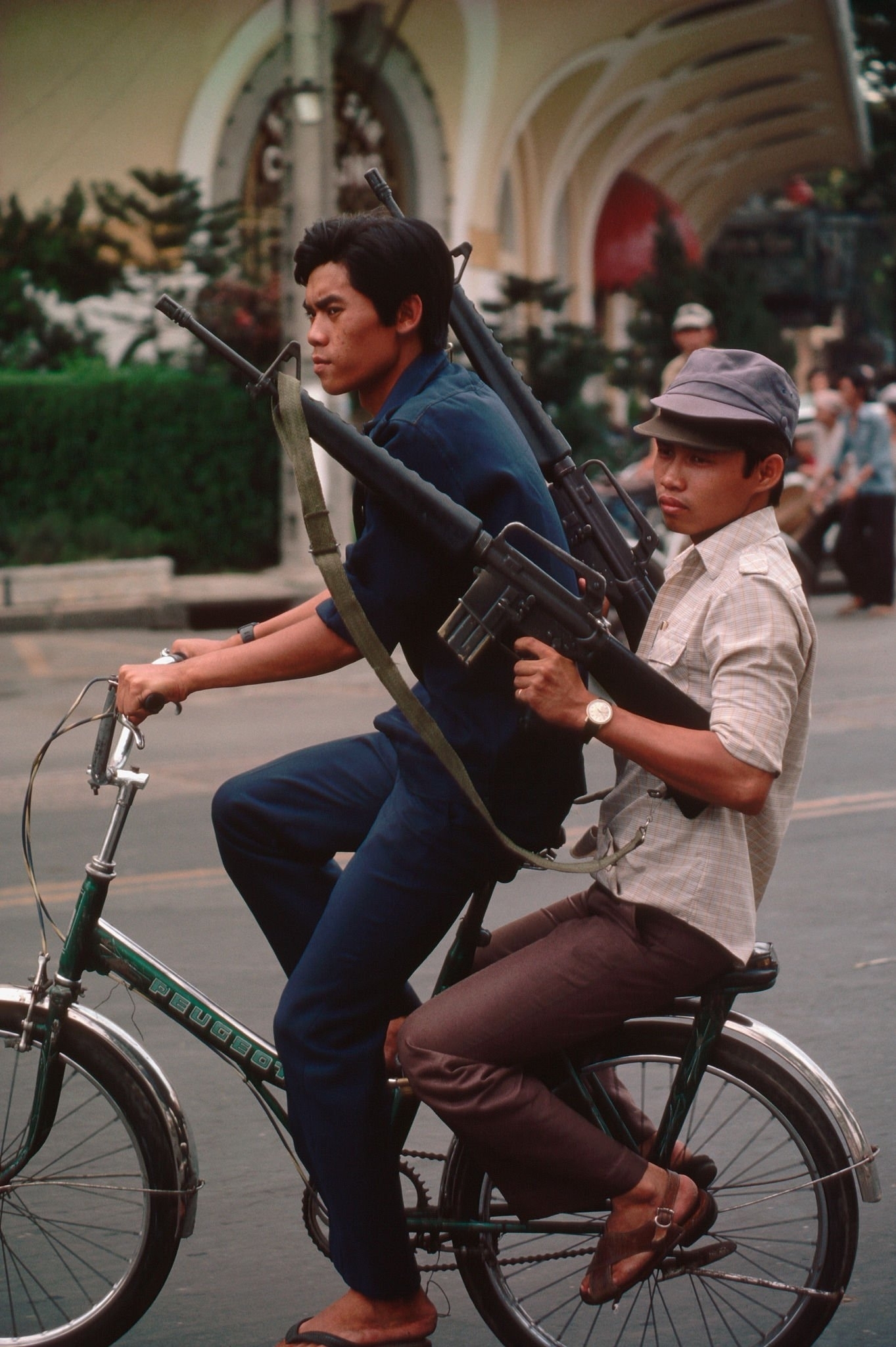
It should be mentioned that these AR-15s were, in fact, select-fire machine guns and not the semiautomatic-only versions seen more prevalently today. Early Adoption and Controversy
South Vietnam released extremely positive reports of the AR-15’s reliability in the field. The Vietnamese report revealed that the rifle suffered no broken parts after firing 80,000 rounds in one stage. Only two replacement parts were required for the evaluation of 1,000 weapons. The report came with the strongest recommendation that the United States should provide the AR-15 as the standard rifle of the ARVN. However, Admiral Harry Felt, Commander in Chief of Pacific Forces, rejected this after hearing the advice and counsel of the U.S. Army.
In 1962 and 1963, the military extensively tested the AR-15. The rifle was praised for its lightness and reliability. On the other hand, Army Materiel Command criticized its inaccuracy at long ranges and its lack of penetration at these ranges.
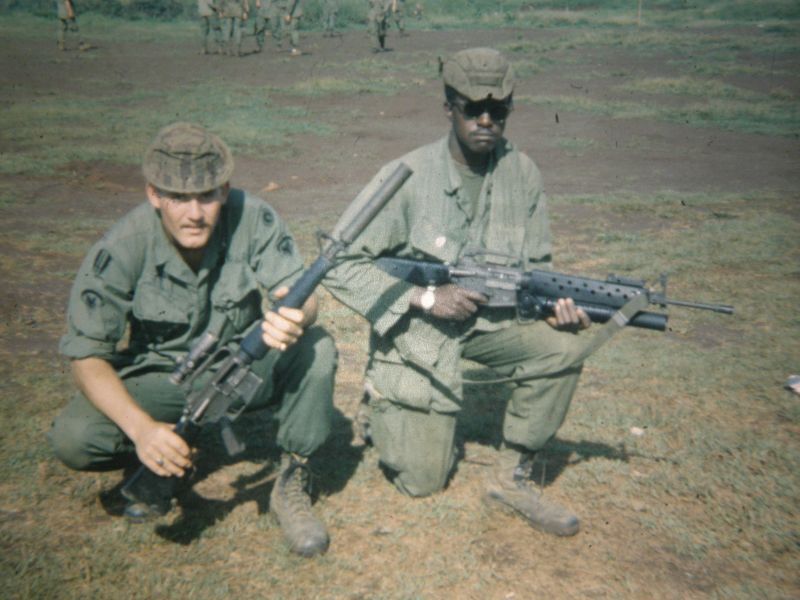
Early furniture choices for the M16A1 and other early variants were limited, and the accessories and optics we now take for granted were no-where near as adaptable. The U.S. Army’s Special Forces asked and were permitted to make the AR-15 their standard weapon. Requests from Army units such as the 101’st Airborne and clandestine units affiliated with the Central Intelligence Agency quickly followed.
At this time, Lieutenant Roy Boehm, who was developing the U.S. Navy SEALs at the time, was subjected to a Board of Inquiry over buying AR-15s over the counter instead of going through the Navy’s Bureau of Weapons. However, the investigation was closed after Boehm received authorization from President John F Kennedy after the president witnessed the rifle performing in a demonstration by the SEALs during a visit to their facility in Little Creek, Virginia.
More units began adopting the AR-15, prompting Army Secretary Cyrus Vance to investigate why the Army initially rejected it. It turned out that the Army Material Command rigged the earlier testing by using match-grade M14s while the AR-15s were standard off-the-shelf types.
By January 1963, Secretary of Defense Robert McNamara determined and stated that the AR-15 was the best current choice as a weapon system and immediately ceased the M14 production and closed the Springfield Armory. The Department of Defense started mass procurement of AR-15 rifles for the Air Force, special Army units, and the Navy SEALs. The U.S. Army Ordnance Department had permission to modify the design as needed. The first modification was the addition of a forward-assist mechanism to allow a troop to force a round into the chamber if it failed to load properly.
Of course, the U.S. Air Force and the US Marine Corps objected to this addition, with the Air Force noting there was no record of malfunctions that the use of the forward assist could have corrected. Additionally, it was noted that the forward assist added weight and complexity to the manual of arms, which had the potential to reduce the AR-15’s reliability. The Air Force, Colt’s Manufacturing, and Stoner himself objected to it on multiple grounds, including the expense of retooling.

Magnified optics were a logical attempt to solve the “accuracy at range” issue that plagued the 5.56 (and not just in the M16A1) Colonel Harold Yount, who managed the Army procurement, later stated that the addition of the forward assist came as a directive by senior leadership and not from any test or complaint in the field. Yount testified: “The M-1, the M-14, and the carbine had always had something for the soldier to push on; maybe this would be a comforting feeling to [them] or something.”
After adding the forward assist and relocating the charging handle to the rear of the receiver instead of within the carry handle, the redesigned AR-15 was initially adopted as the XM16E1. The Air Force version lacked the forward assist and was adopted as the M16.
However, this rifle, already swirled in controversy, was about to have some teething problems in combat.
When the M16 Faltered
The small changes to the AR-15 did not include one feature critical to operating in a humid environment: A chrome-lined bore. Compounding this was a lack of an adequate cleaning kit for a smaller bored weapon than the .30 caliber weapons previously in inventory.
This led to a misconception due to advertising by the manufacturer, Colt’s Manufacturing. Colt boasted that the modern materials (aluminum and plastic) used in the rifle’s construction required little maintenance. This was somehow interpreted as the rifle being “self-cleaning.” Most cleaning used the wrong fluids, from water to mosquito repellent to aviation fuel, leading to further wear on the rifle.
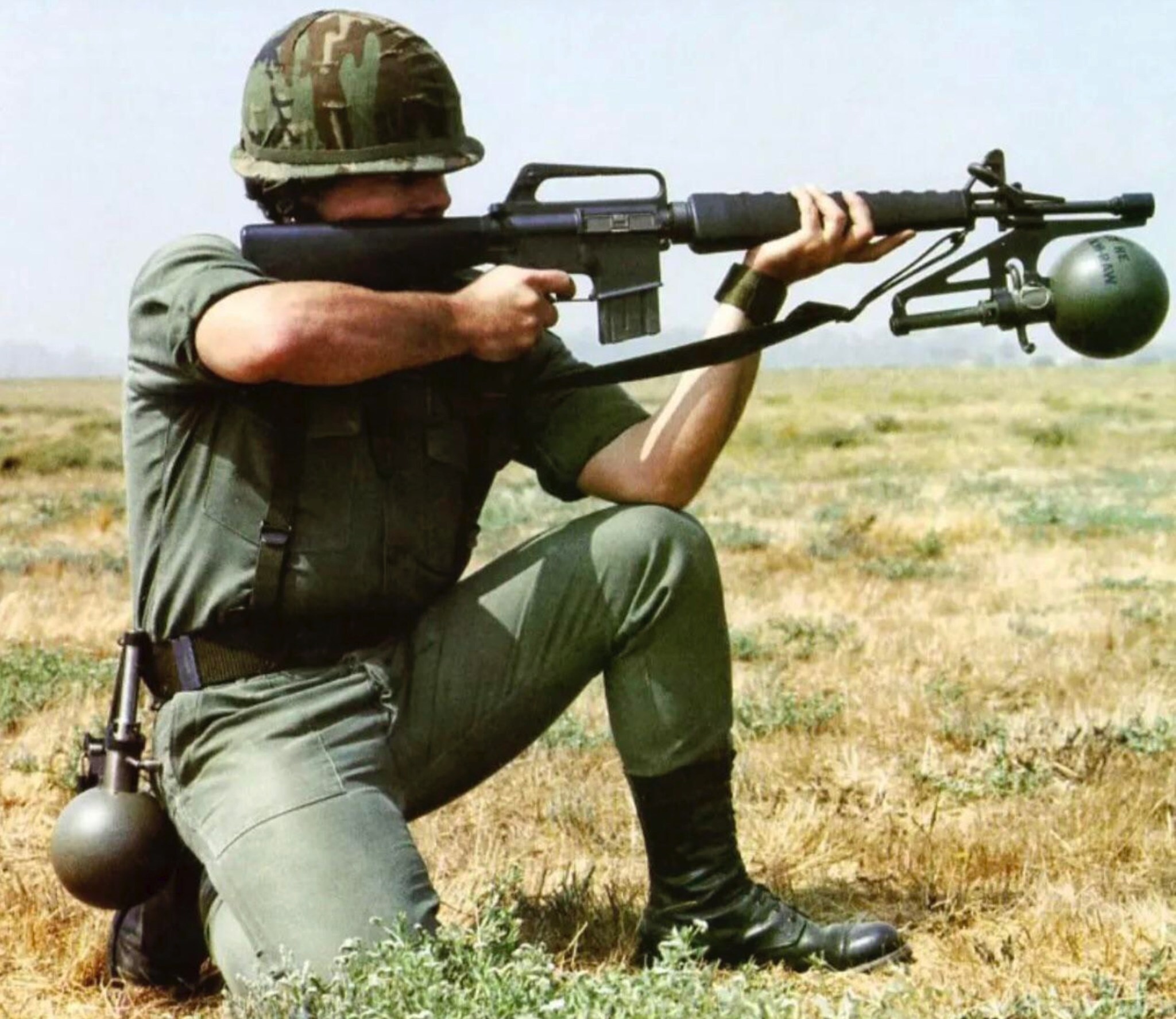
Seemed like a good idea at the time…. Adding to this was an issue with ammunition. In 1964, DuPont announced that it could no longer produce the IMR 4475 rod powder according to the specifications provided by the Army. Competitor Olin Mathieson Company said its WC 846 high-performance ball powder could achieve the 3300 feet per second muzzle velocity. Yet this powder produced much more fouling, which induced stoppages in the rifle’s action when not properly maintained.
The most severe stoppage reported by troops was a failure to extract a spent case. There were documented accounts of dead troops holding disassembled M16s, which resulted in a Congressional investigation. Some troops claimed that the M16A1 and some of its cousinscontributed to more casualties than the enemy’s attacks.
Another, albeit less serious issue, was the rifle’s distinct three-prong flash hider that proved to be fragile and prone to becoming entangled in vegetation in a jungle environment.
The Not-So-Carriable Carry Handle
Perhaps the most unique feature of the M16A1 service rifle is the ubiquitous carry handle. Yet one of the first things you were taught in the U.S. Military was to never carry the rifle by the handle. More importantly, it acts as a sight tower to hold the rear sight. This feature is largely absent on modern M16s and AR-15s and has been replaced by a Picatinny rail in most cases.
The carry handle was present on its predecessors to house the rear sight and protect the charging handle. On the M16A1, the rear sight is only adjustable for windage and can be adjusted by means of either a sight tool or a 5.56 NATO cartridge to hold down the detent and turn the wheel in whichever direction it is needed. Elevation adjustments are performed by raising or lowering the rifle’s front sight post.
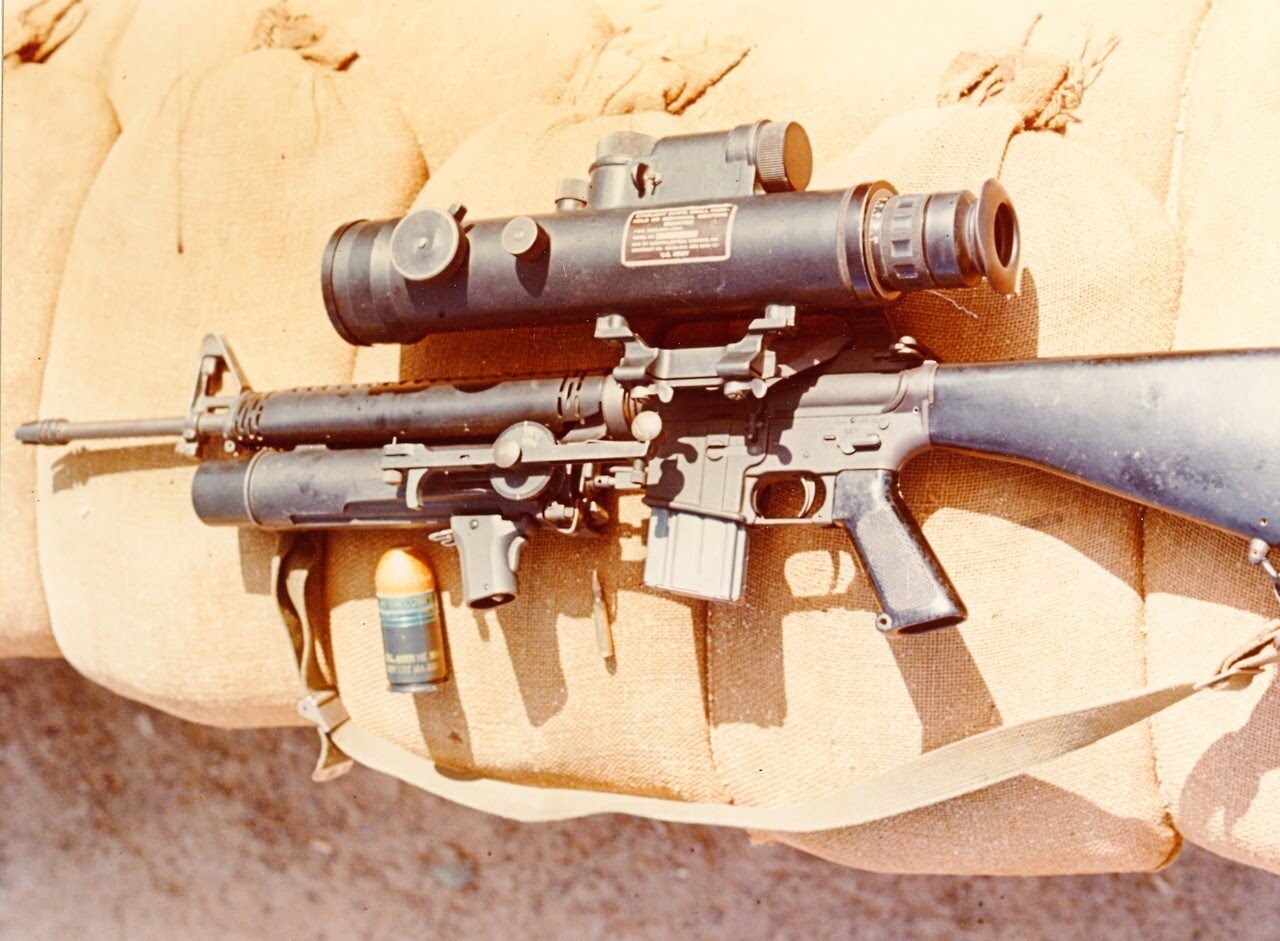
Mounting anything to an early M16 required some serious ingenuity. For more accurate shooting, there is a groove in the top of the carry handle as well as a hole. This was intended for the ability to mount an optic, provided by Colt. The fixed power 3×20 telescopic sight included a bullet drop compensator, allowing the shooter to adjust between 100 and 500 yards. Other sights were available in later years, including the Trijicon ACOG and the ANPVS-4 night vision scope.
The rifle’s rear sight is a dual aperture flip-up sight shaped like the letter “L.” One is used for short-range out to 250 yards, and the other allows the shooter to range to 400 yards.
Lessons Learned
In order to eliminate issues with corrosion in the humid jungle environment of Vietnam and extraction of the spent cases, the bore and chamber of the M16 were lined with chrome. Additionally, a proper cleaning kit was issued with the rifle and a list of authorized cleaning agents and lubricants.
To its credit, the U.S. Military began intensive training programs for all troops. It went as far as to publish a cleaning and instruction manual in the form of a comic book, generously using illustrations in a storyboard format to educate the troops. Later versions of the rifle incorporated a compartment in the butt stock to store the cleaning kit. A raised section was incorporated around the magazine release, sometimes referred to as the “fence.” This was to prevent troops from accidentally hitting the magazine release while handling the rifle.
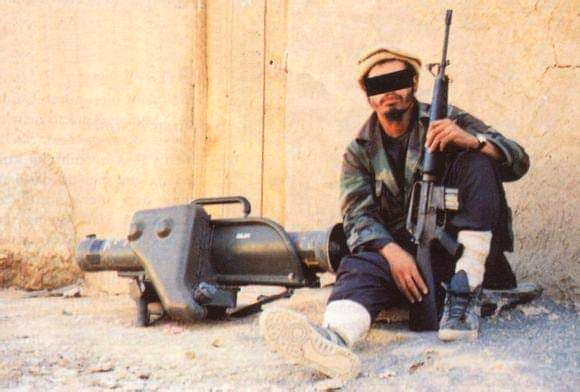
A Mujahideen fighter-with M16A1 and anti tank-Milan missile Soviet Invasion of Afghanistan Lastly, the flash suppressor was replaced by a bird cage design that strengthened it, prevented it from catching on things, and decreased muzzle rise by acting in a sense like a compensator or a muzzle brake. These measures resolved issues with reliability, and the M16A1 emerged, leading to widespread acceptance by troops across all military branches. In 1969, the A1 officially replaced the M14 rifle as our nation’s standard service rifle, and in the following year, Olin introduced a cleaner burning propellant with its WC 844 powder.
Yet, the initial reports from troops in the field during the War’s early days continued to plague the entire M16/AR-15 platform. Although these issues largely disappeared with the introduction and adoption of the M16A1, the rumor mill continued to churn out misinformation about the rifle’s abilities that lasted into the 21st Century.
Despite these rumors, the M16A1 and its variants were manufactured by Colt, Harrington & Richardson, and GM’s Hydramatic Division until 1982.
Although superseded by the later M16A2 by the early 1990s, the M16A1 continued to see service by Reserve, National Guard Troops, and Law Enforcement Agencies well into the 2000s. For as many updates as the A2 and even later models received, a lot of troops preferred not only the simplicity of the M16A1 but the full auto mode over the restricted “3-round burst” mode and, of course, the smoother and crisper trigger of the A1 over the A2.
In many ways, it paralleled the idea of a classic car being phased out for more modern automobiles. It not only could be called the muscle car of the AR-15/M16 platform, it should be.
Or at least one of the muscle cars!
-
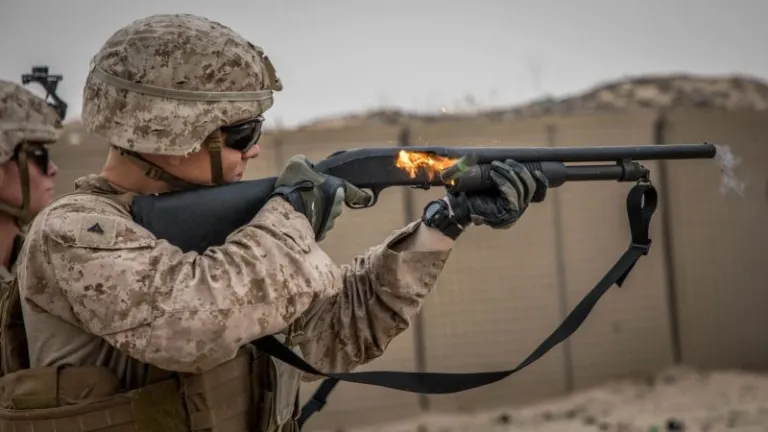
Military Grade” Weapons You Can Own
Military Grade – This Is What’s Issued
The phrase “military grade” is often used as a marketing term, but in reality, it’s a thing. A description, really, of items made to an exact set of specifications. Gun, knife, life-jacket, or insect repellent; they can all be military grade. The items might be great or they might be crap, and typically the lowest bidder gets the contract. That doesn’t always mean cheap, though. Hell, have you seen how much the military pays for toilet seats?
Note that military grade is not the same as military issue.
For the purposes of this article, we’ll be talking about “military grade” firearms that are commercially available to the private citizen. These weapons, while issued to military personnel in various duty assignments, differ only slightly (if at all) to their “civilian” counterparts.
Let’s dive into the world of the military-grade guns you can own. Yes, you, the average joe, as long as you aren’t a felon and live in a free state. Of course, with many things, a lot of the fun of these guns has been removed. Sadly the NFA and later Hughes Amendment make owning guns with giggle switches somewhat difficult, so you’ll have to excuse the lack of such features.
So without further ado…
Military Grade Firearms You Can Own
Mossberg 590A1
Mossberg designed the 590A1 to meet the military’s requirements for a pump-action shotgun. This includes a heavy, thick-walled barrel, a bayonet lug, a metal trigger group, and an action reliable enough to eat 3,000 rounds of buckshot without issue. Mossberg has long made the 590A1 available to the average joe and in numerous configurations. This mighty mean shotgun is an excellent home defense and fighting shotgun and is one of the few guns on the list that’s legal in all 50 states.

The Mossberg 590A1 comes in a number of configurations. Benelli M4
The Benelli M4, or M1014 Joint Service Shotgun, is what happens when you send the Marines to find you a shotgun. They did just that, and the Benelli name became synonymous with tactical shotguns. You can go two ways with this gun. Purchase the M1014 clone from Benelli with its fixed faux collapsing stock and five round tube. Or go my route, buy a Benelli M4, buy the proper collapsing stock, and get 922R parts from Freedom Fighter Tactical. The latter is the best way to get as close as possible to a military grade M1014.
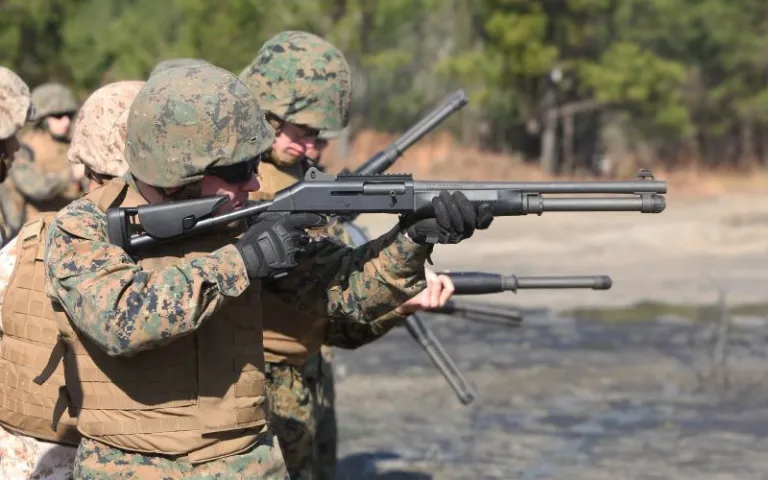
Marines love their shotguns. SIG M17/18 Series
SIG won the MHS contest and almost immediately made the M17 and M18 series available to the civilian market. These are almost 1 for 1 clones of the military’s pistol, and the big difference is the controls are black instead of FDE. A quick visit to the cerakote shop will fix that. The M17 is the full-sized SIG, and the M18 is essentially the ‘Carry’ model. SIG’s military grade handguns are optics ready, fitted with a manual safety, and all you need is a Safariland holster to complete the package.
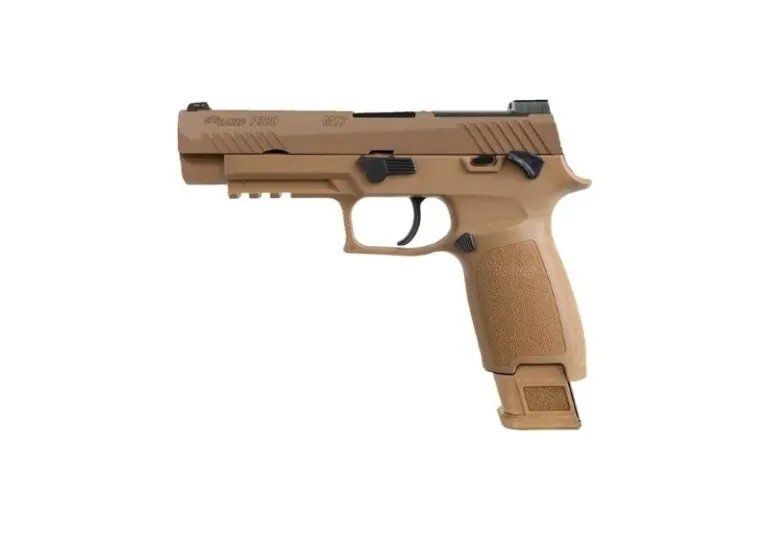
Beretta M9
Yeah, it might be sour grapes that Beretta has lost their dominant spot on the military’s sidearm list, but the M9 will stick around for a few years. It takes time, often lots of it, to equip the entire military with a new handgun. Until then, the classic Beretta M9 and M9A1 will continue to serve. The M9 is a 9mm, DA/SA pistol with an all-metal frame and is the military-grade version of the 92FS. Beretta makes the M9 and M9A1 configurations available to shooters so you can have a perfect clone of the classic Italian stallion.
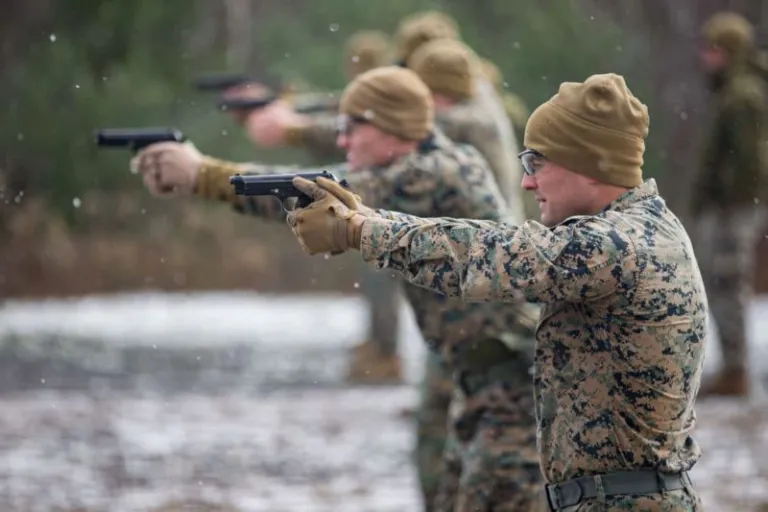
The M40 Series
When the Marine Corps needed a new rifle system, they turned to the Remington 700 series of bolt action rifles and have seemingly never looked back. You can buy the base level Remington 700 in .308 Winchester and turn it into any of the M40 variations or go directly to the source. A little company called GA Precision produces the M40A5 as a plug-and-play Marine Corps and military grade sniper rifle. The half MOA guarantee might make you feel a bit better about the 5k price tag!
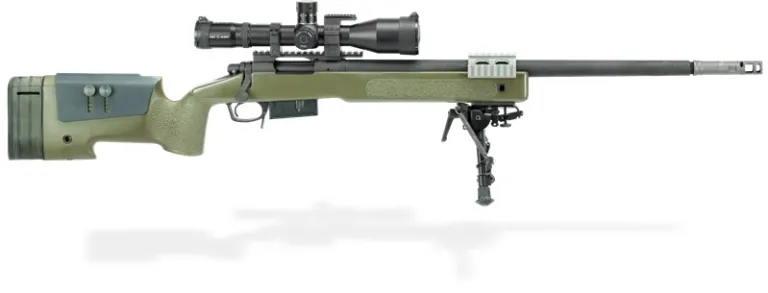
FN Military Collector Series
I’m combining two for one in this entry. FN produces the Military Collector series to replicate the M16 and M4 almost perfectly, minus the giggle stick. This includes the quad rail, UID sticker, and the classic aluminum magazines. Sure the M4 has a 16-inch barrel instead of the 14.5 the actual M4 wears, buts it’s close enough for collectors who don’t want a stamp. FN makes solid rifles and has been the trusted provider of M16s to the military since 1988.
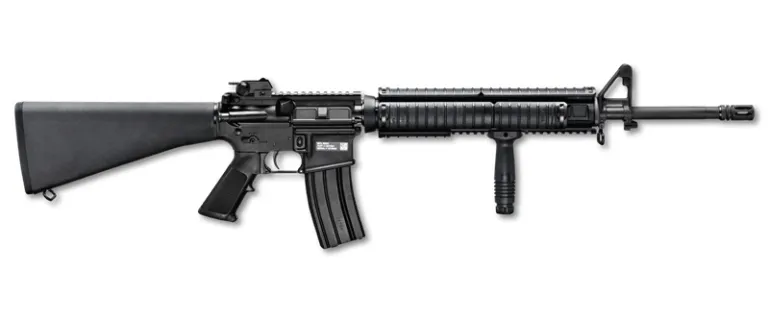
Oh, my the classic M16 still has style. FN M249
Sticking on the FN train, I have to give them major props for having the balls to release the M249 PARA in semi-auto, closed bolt form. This famous light machine gun has been the squad support weapon since 1984, and out of the blue, FN decided to release a semi-auto belt-fed model a few years back. That’s evolved into the Para model that’s available today. Be prepared to fork over close to 10K if you want your own NFA-free M249. At the end of the day, the civilian M249 is a big, heavy, and expensive rifle, but holy crap, I still want one.
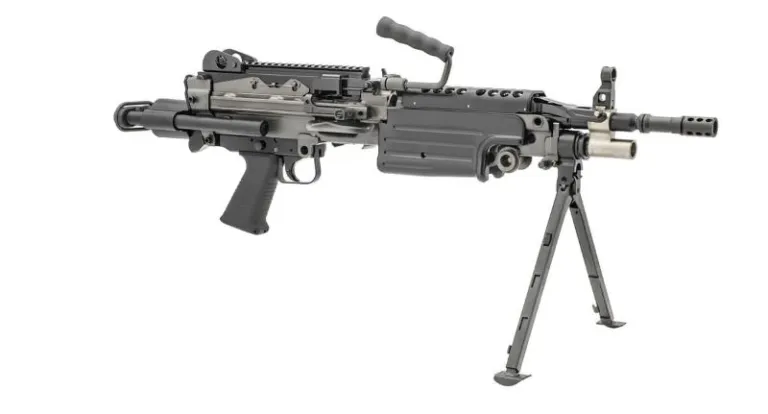
Ohio Ordnance Works M240 SLR
Since we are talking about belt-fed, semi-auto, somewhat nonsensical rifles, I can’t forget to mention the Ohio Ordnance Works M240 SLR. Yep, a full-powered, belt-fed M240 clone in semi-auto, closed bolt form. It’s a thing of beauty, and they replicate the look and feel of the classic M240 well. For a little over 14K, you get the gun, 2,500 links, a custom hard fit case, and almost two dozen accessories. It’s silly to have a nearly 30-pound .308 semi-auto rifle, but you can’t deny it’s not stylish. A semi-auto format might not be exactly military grade, but I give it up to Ohio Ordannce Works for making such a beautiful piece of machinery.
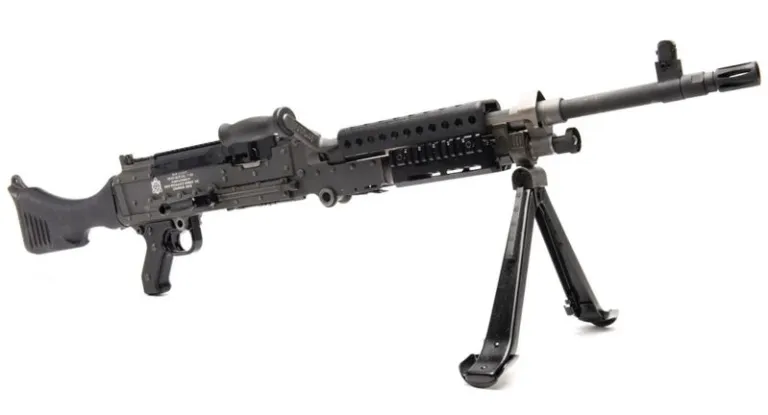
Yeah, it’s a 7.62 rifle that weighs 30 lbs but it’s dang cool. SIG Spear in .277 Fury
SIG recently won the NGSW contest with their entry of the SIG MCX Spear in their new 6.8x51mm round. Coming off that win, they released the SIG Spear in .277 Fury for the civilian market. SIG’s short store gas piston gun features a 13-inch barrel, so it’s an SBR. The first run is a special edition run complete with a suppressor, so it’s a two-stamp setup. This gun is as close as we can get to the new XM5, and it costs a pretty penny to do so. Hopefully, Vortex makes the coordinating optic so we can get the full NGSW experience. As of right now, it’s the latest in military grade rifles.
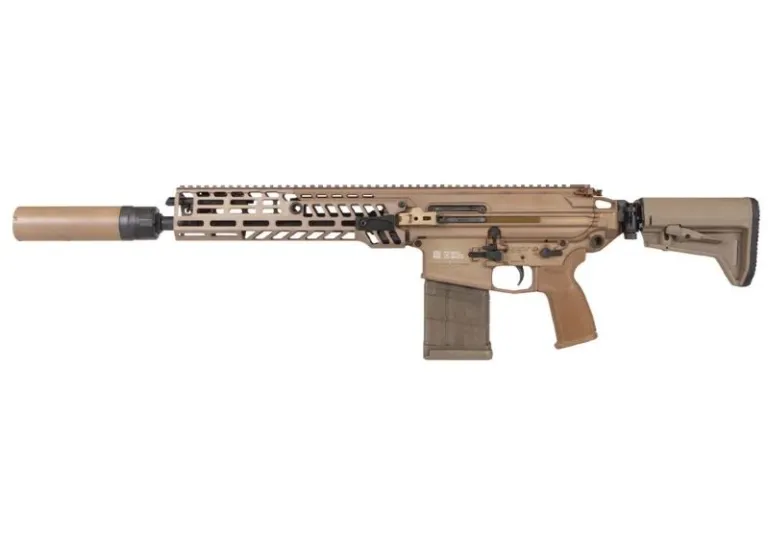
SIG Rattler
Yep another SIG. I know, I know, they’ve kind of dominated the list. SIG has been getting contract after contract, and the latest isn’t the NGSW but the Rattler. SOCOM wasn’t a personal defense weapon, and SIG’s Rattler fit the bill. The Rattler is a pocket-sized military grade rifle in 300 Blackout and 5.56. Socom apparently purchased quantities of both calibers. It should be noted the SIG Low Visibility Assault Weapon, or LVAW is a variant of MCX very similar to this layout made for Delta Force. SIG sells the Rattler as both an SBR and large format, braced pistol.
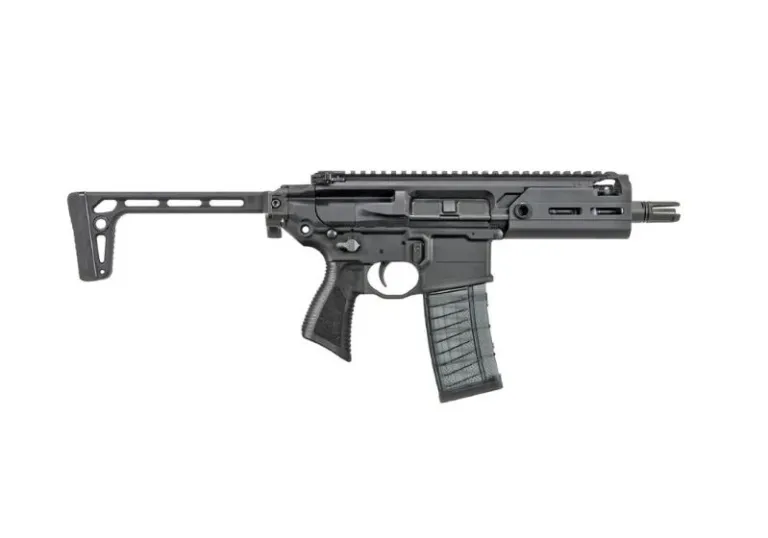
B&T APC9K
Last but not least, the B&T APC9K is the first SMG adopted by the United States Army since the Grease Gun. The subcompact weapon contest came out with B&T on top and the little APC9K being the gun to beat. B&T happily made a limited series of SCW clones, as well as releasing the APC9K. I love the APC9K, and it’s my favorite little subgun. It’s certainly high priced, but man, the Swiss sure know how to build a gun, plus they aren’t shy to sell them to you or me, and I can greatly appreciate that.
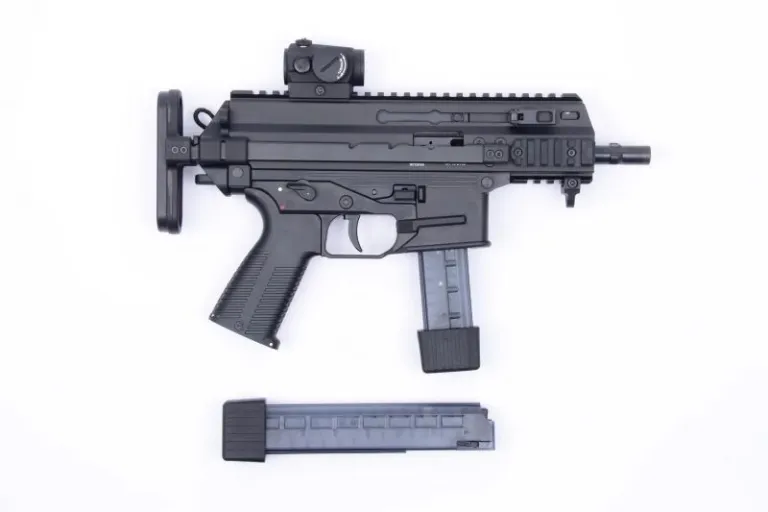
Military Grade Misses
I provided 11 guns you can purchase today that are in use by the United States military. They aren’t perfect replicas but fall within the lines of what’s legal for the average joe to own. I know I had to miss some, so I’m turning it over to the comments section to help out.
Do guns like the Mk23 and M11-A1 deserve to be on the list? Let us know!
About the Author
Travis Pike is a former Marine Machine Gunner, a lifelong firearms enthusiast, and now a regular guy who likes to shoot, write, and find ways to combine the two. He holds an NRA certification as a Basic Pistol Instructor. is the world’s Okayest firearm instructor, and a simplicisist when it comes to talking about himself in the 3rd person. Hit him up on Instagram, @travis.l.pike, with story ideas.
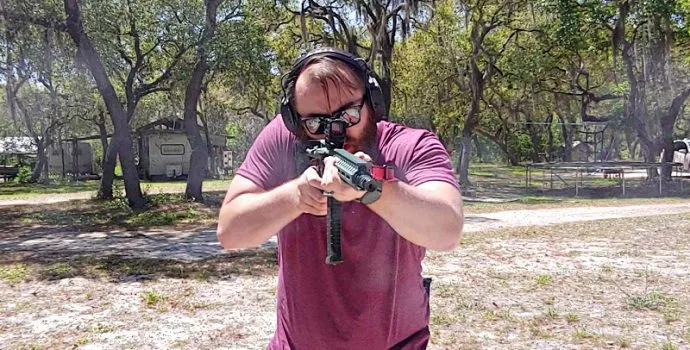
-

The Remarkable Hiram Maxims
The Maxim name is well-known in American and European firearms circles. Sir Hiram Maxim and his son, Hiram Percy Maxim, are gun industry giants, though neither initially set out to advance firearm technology. Rather, both men were talented inventors who applied their skills and interests to specific firearms-related endeavors.
It just happened that each of those endeavors became their creators’ most famous and influential inventions.

Sir Hiram Maxim (left) and his son, Hiram Percy Maxim (Public Domain) Hiram Maxim the Inventor
Hiram Stevens Maxim was born to a French Huguenot family in 1840. A native of Sangerville, Maine, Maxim became an apprentice coach builder at age 14. At 24, he moved to Fitchburg, Massachusetts to work at his uncle’s machine company. He later worked as an instrument maker and a draftsman. A natural tinkerer, Maxim was reportedly often disappointed by his employees’ lack of ability and industry later in life.
Maxim’s first notable invention was a menthol inhaler for bronchitis patients. He suffered from chronic bronchitis himself and was disappointed when critics called the inhaler “quackery.” Maxim also created the “Pipe of Peace,” a larger steam inhaler that used pine vapor. He claimed it could relieve asthma, hay fever, tinnitus, and catarrh, which is an inflammation of the membranes in the throat or sinuses.
Maxim lamented his critics, saying, “It will be seen that it is a very creditable thing to invent a killing machine, and nothing less than a disgrace to invent an apparatus to prevent human suffering.” Prophetic words, given the invention for which Maxim is best remembered.
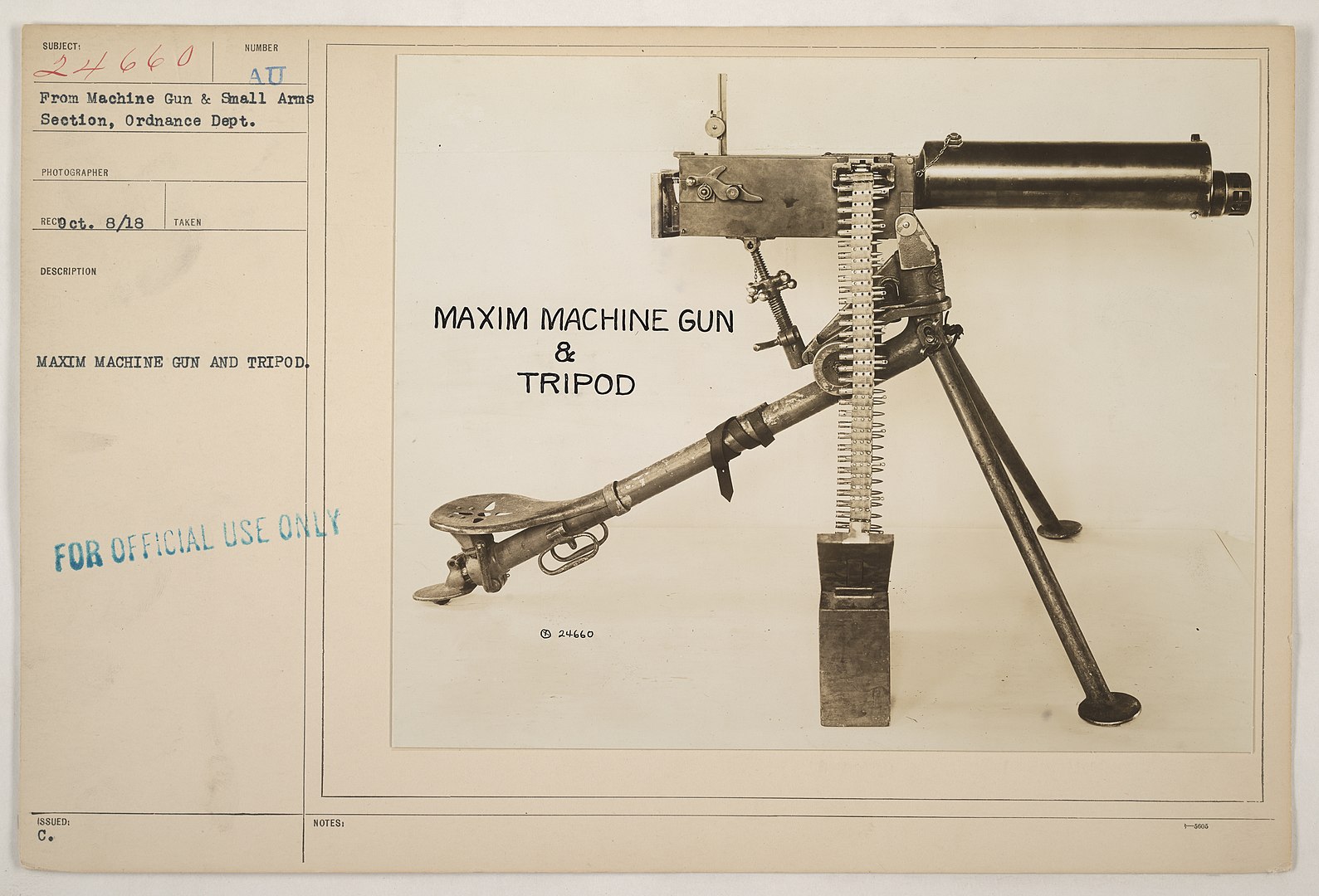
U.S. National Archives and Records Administration Sir Hiram Maxim is best known for inventing the Maxim machine gun. (Public Domain)
Maxim also invented a curling iron, a watch demagnetizer, stabilizing devices for ships, riveting machines, coffee substitutes, and engines running on steam, oil, and gasoline. Maxim also designed the first automatic sprinkler system to fight building fires. He never produced it, but others did when the patent expired.
Maxim designed and installed electric lights for New York City’s Equitable Life Building in 1878, making it the city’s first office building to be so equipped. Maxim also claimed to have invented the incandescent light bulb, accusing Thomas Edison of stealing his idea by manipulating patent law.
Hiram Maxim the Gun Maker
Maxim’s most famous, and influential, invention was the Maxim Machine Gun. The inventor said he turned to firearms after an 1882 visit to Vienna, Austria. An unnamed American with whom he was acquainted gave Maxim some advice: “Hang your chemistry and electricity! If you want to make a pile of money, invent something that will enable these Europeans to cut each other’s throats with greater facility.”
Maxim was in Vienna representing the United States Electric Lighting Company, whose London offices he took over in 1881. He stayed in Great Britain and became a naturalized British citizen in 1899. Maxim remembered being knocked down by a rifle’s recoil when he was young, and his thoughts turned to harnessing that energy to operate a firearm.
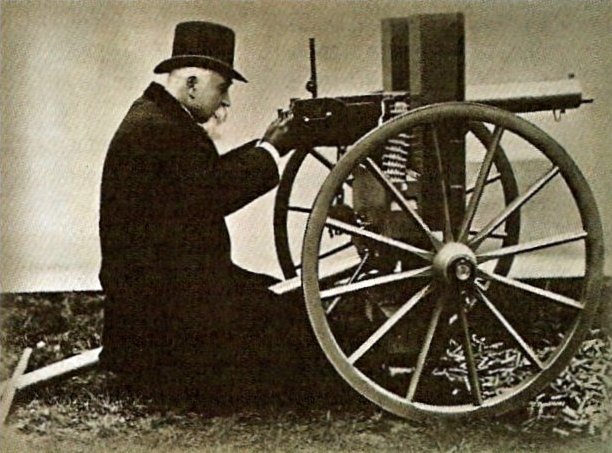
Between 1883 and 1885, Maxim patented gas, recoil, and blowback firearms. He tested his guns in his garden (that’s what Brits call yards). He thoughtfully placed newspaper announcements warning his neighbors of his tests and suggesting they open their windows to avoid unintentional broken glass. Maxim seems not to have given much thought to hearing protection, as he became mostly deaf later in life from testing his gun designs.
Maxim’s progress drew the attention of British industrialist Edward Vickers. Vickers provided funding, and Maxim went into the firearms business. He merged his company with Swedish gun maker Nordenfelt in 1888, establishing the Maxim Nordenfelt Guns and Ammunition Co. Ltd. The British Army adopted the Maxim Gun in 1889, followed closely by Germany, Russia, Austria, and Italy.
Vickers bought Maxim’s company in 1897, forming Vickers, Son, & Maxim. The company introduced the Vickers machine gun, an improved Maxim gun, in 1911. The Vickers gun served British and Commonwealth forces through both World Wars, and into the 1960s. Other Maxim variants served on both sides of the world wars, and are still in use today, most recently in Ukraine, along with many Vickers guns. The Maxim family of machine guns is among the most reliable firearms ever built. Maxim resigned from Vickers, Son, & Maxim in 1911, on his 71st birthday.

An American sailor named Smith mans a Maxim QF 1-Pounder on board the USS Vixen around the time of the Spanish-American War (Public Domain) Maxim also designed and built the QF 1-Pounder, a 37mm autocannon based on the Maxim machine gun. The gun was known as the “Pom Pom” thanks to its distinctive sound. Maxim patented the gun in the 1880s, and it saw action with British, South African, German, Finnish, and American forces as a light naval and infantry support gun in the Spanish-American War. It reprised that role, while adding antiaircraft responsibilities, in both world wars and the 1939-40 Winter War. It was also used by several South American nations. The 1-pounder Mark 6 version became the US Navy’s first dedicated antiaircraft gun in 1916.
Hiram Maxim the Aeronautical Engineer
Maxim inherited a lifelong interest in powered flight from his father. The senior Maxim had sketched out a helicopter with two counter-rotating rotors. But engine technology was still comparatively primitive, and he couldn’t power it. Hiram Maxim also conceived a helicopter in 1872, but never followed through. He began his first powered flying machine in 1889. Maxim tested airfoil and propellor designs in a wind tunnel and a self-built “whirling arm” test rig. He later developed that test rig into an amusement park ride that is still running today and provided the basis for many modern rides.

Sir Hiram Maxim’s Captive Flying Machines ride still operates at England’s Blackpool Pleasure Beach. Disney engineers inspected the ride before building their Golden Zephyr attraction. (John Phillips/English Wikipedia) Maxim’s test craft was 40 feet long with five wings. The wingspan was 110 feet and the craft weighed 3.5 tons. He powered it with two naphtha-fired 360-horsepower steam engines. Two 17-foot laminated wood propellors provided thrust. Maxim ran the machine along an 1,800-foot section of railroad track he laid at his home. He attached four wheeled outriggers running on an exterior wooden track to keep the craft from lifting more than a few feet during the 1894 trials. The craft did indeed lift off, engaging all the outriggers, but it pulled up their wooden track, forcing Maxim to shut it down.
Maxim never developed his flying machine further, concluding it needed a better power-to-weight ratio to operate properly. It seems he might have beaten the Wright brothers to actual powered flight had he pursued his work.
After leaving Vickers, Maxim started the Grahame-White, Blériot, and Maxim Company to produce scouting and bomber aircraft for the nascent Royal Flying Service. But ill-health forced his retirement before the company could be developed.
Sir Hiram Maxim
Maxim was granted 122 United States patents and 149 British patents. The Maxim gun remains his signature invention, but others were also significant, especially if the light bulb story is true.
Queen Victoria knighted Maxim in 1901 for his contributions to science, though she died before his investiture. Maxim received his knighthood from his “friend and new king, Edward VII.” He was also a Chevalier of the French Legion of Honor, a Fellow of the Royal Institution, and a Fellow of the Royal Society of Arts.

Sir Hiram Maxim’s flying machine achieved lift, but he determined that it needed a better power-to-weight-ratio. (Flickr/Louise not Lulu) Maxim worked as long as he was able, only retiring as his health failed. He passed away on November 24, 1916, at age 76. Maxim is buried in London’s West Norwood Cemetery, along with his wife, Sarah and his grandson, Lt. Colonel Maxim Joubert.
Hiram Percy Maxim
Genius begets genius, and Hiram Percy Maxim was very much like his father. He earned a mechanical engineering degree from MIT at age 17. It was a two-year program at the time, but it’s still impressive. He shared his father’s interest in electricity and worked for electric utility companies in Boston after graduating.
Maxim was soon interested in automobiles, and by 1892 was building his own internal combustion engine. Many early cars were driven by electricity, but Maxim believed gasoline powered engines were the future. He said he was “staggered at the amount of time required to build one small engine.” But he was also intrigued.
Still, his final product left much to be desired. The engine, he wrote, “shook and trembled and rattled and clattered, spat oil, fire, smoke, and smell, and to a person who disliked machinery naturally, and who had been brought up to the elegance and perfection of fine horse carriages, it was revolting.” It seems odd that a mechanical engineer and inventor would dislike machinery.
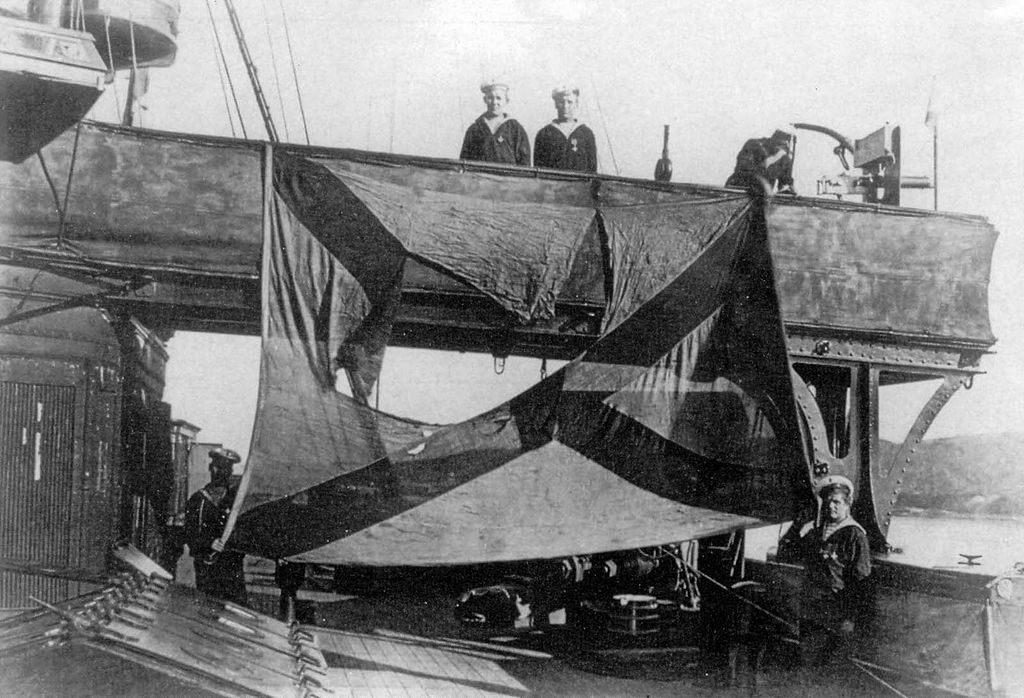
Imperial Russian armored cruiser “Gromoboi” after Battle off Ulsan, August 1904 (Wikipedia) 1895 saw Maxim hired by the Pope Manufacturing Company’s Motor Vehicle Division. He immediately involved himself in auto racing, serving as an umpire in that year’s Chicago Times-Herald race and riding in the Morris and Salom Electrobat II.
Four years later, Maxim drove the winning car, a Pope Columbia, in the first American closed circuit auto race. The Pope Columbia became the Columbia Gasoline Carriage. With Hiram Percy Maxim’s latest internal combustion engine under the hood, the car was among the world’s first gasoline powered production automobiles.
Maxim the Acoustical Engineer
Maxim’s dislike of loud automobile engines led to his interest in muffling their sound. Source material indicates that Maxim immediately grasped how his ideas for car mufflers could be applied to firearms, and the technology was developed simultaneously.
Despite his love of automobiles, Maxim’s primary focus between 1902 and 1910 or so was a firearm sound muffler, which he patented in 1909 as the “Maxim Silencer.”
Maxim claimed the idea came when observed his bath water swirling into the drain. He wondered whether gases generated by a fired cartridge could be slowed down by forcing them through vortices as they escaped the firearm’s muzzle.
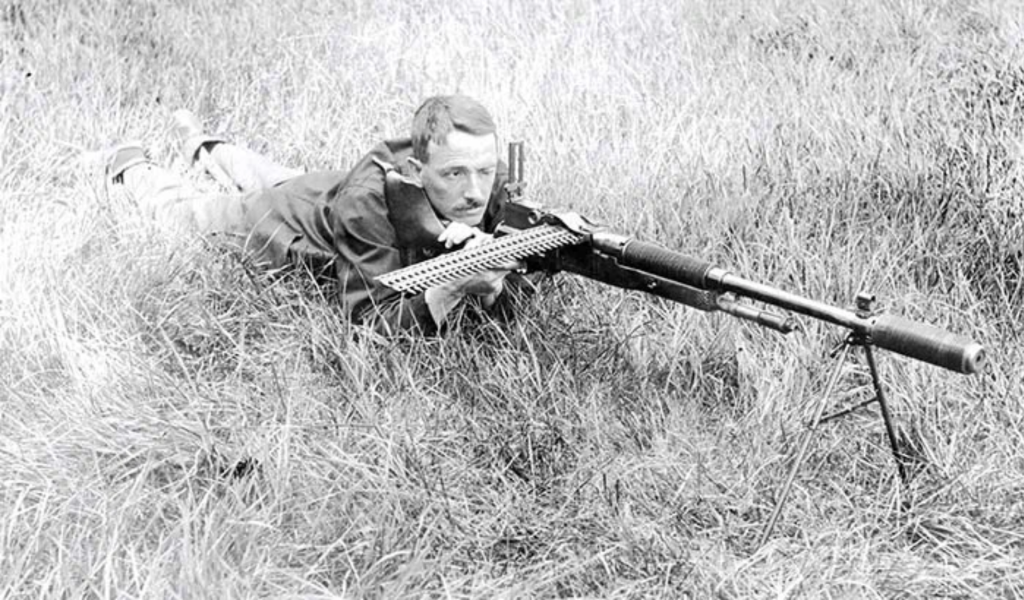
Hiram Percy Maxim holds a Winchester rifle equipped with a Maxim Silencer. (Public Domain/kingsaw100) The new product was marketed nationally by the Maxim Silent Firearms Company, claiming that the Silencer “absolutely annuls all of the noise of the report.” It also reduced recoil by two-thirds.
Sonic booms and the sound barrier were yet unknown, but Maxim understood that atmospheric conditions also affected a firearm’s noise level. “The only noise the Silencer does not control is the noise made out in the air beyond the gun by a high velocity bullet in its flight.” Maxim explained that the sound results from the same phenomenon that makes a whip crack. “This noise cannot be avoided when the bullet velocity is high no matter how quiet we make the gun.” Maxim clearly knew about where the speed of sound was in feet per second (1,125), since his company offered 1,100 fps ammo, which he advertised as having “strictly noiseless bullet flight.”
The Maxim Silencer was a big hit, with many considering it rude to use an unsilenced firearm. Maxim’s company was very successful until ignorant politicians, egged on by the police and Justice Department, included suppressors in the 1934 National Firearms Act.
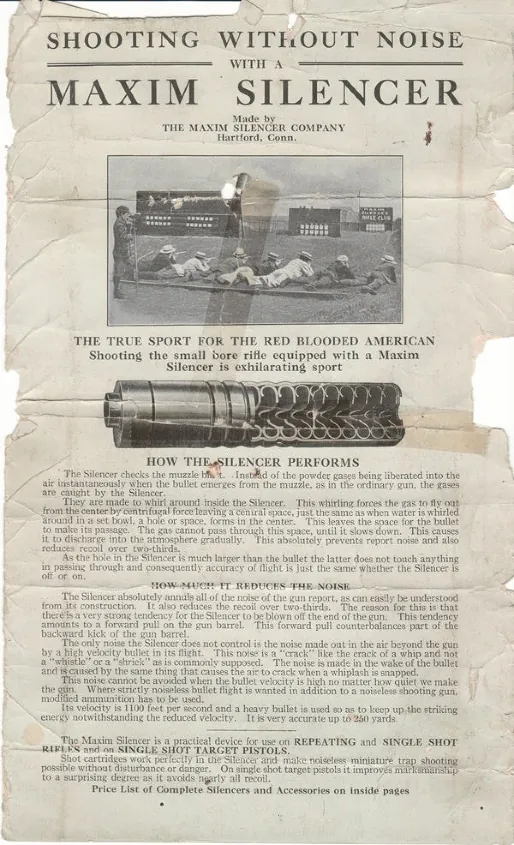
A 1908 newspaper announces the Maxim Silencer, while simultaneously calling for its regulation. Some things never change. (rarenewspapers.com) Maxim himself soon returned to automobiles, applying similar technology to make engines quieter. Those principles were also used for air compressors, air conditioning units, and other machines. Modern muffling techniques are built on Maxim’s pioneering work.
Maxim’s Other Interests
Hiram Percy Maxim shared his father’s enthusiasm for aviation, and owned one of New England’s first aircraft, a glider. Maxim promoted the advantages of reliable air mail service and was the longtime chairman of the Hartford, Connecticut Aviation Commission. He was responsible, in that role, for establishing Brainard Field, Hartford’s first municipal airport.
But Maxim’s greatest love may have been radio, which he discovered in 1909. He quickly learned radiotelegraphic code, and he and his son, Hiram Hamilton Maxim, built one of Hartford’s first radiotelegraph stations. It featured a powerful rotary spark-gap transmitter with “enormous antennas.” Maxim called his rig “Old Betsy.”
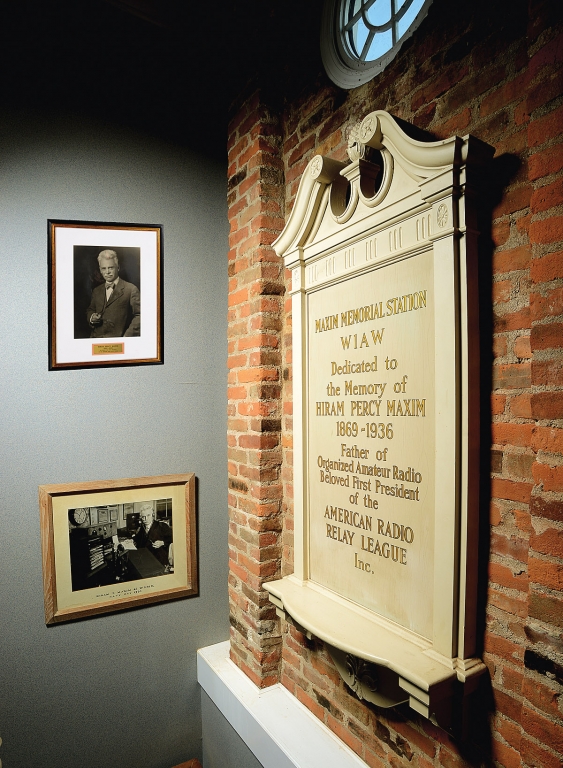
Hiram Percy Maxim’s greatest love may have been amateur radio. (arrl.org) Maxim wanted to extend his communications range, so he and the Radio Club of Hartford created the American Radio Relay League in 1914. The League organized amateur radio operators across the country to relay messages across the American continent. Maxim was the League’s first president.
The organization still exists today and is the national membership organization for amateur radio operators. The League’s headquarters radio station is called the Hiram Percy Maxim Memorial Station, with its call sign, W1AW, being Maxims last licensed call letters. “Old Betsy” is displayed at League headquarters.
The Remarkable Hiram Maxim
Hiram Percy Maxim died unexpectedly on February 17, 1936, at age 66. Returning home from a visit to the Lowell Observatory in Flagstaff, Arizona, he fell ill as his train passed through Colorado. He was taken to the hospital in La Junta, and died the next day from a throat infection. He rests in Hagerstown, Maryland’s Rose Hill Cemetery, in his wife’s family’s plot. His wife, Joesphine Hamilton Maxim, later joined him there.
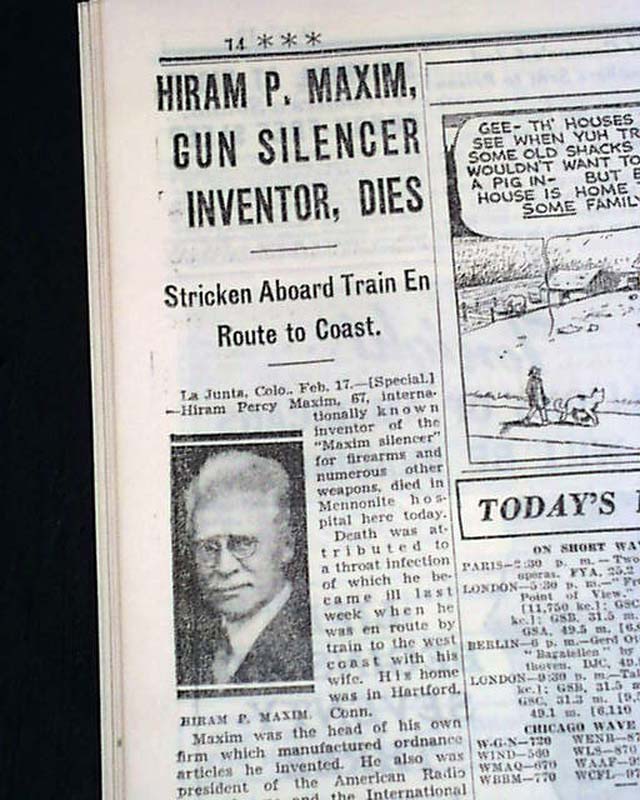
Hiram Percy Maxim’s death was sudden and unexpected. (rarenewspapers.com) Sir Hiram Maxim and Hiram Percy Maxim are both best known for their work in firearms technology. Though quite different from one another, each invention was based on harnessing the gas released by a fired cartridge. The Maxim Gun used the gas to cycle its action, allowing for sustained automatic fire. The Maxim Silencer tamed the gas to reduce noise and recoil, creating a more pleasant shooting experience.
But the Maxims were far more than firearms engineers. They were true inventors, each with a wide range of interests that often influenced one another. They grasped concepts and principles, following them to their practical applications. Critics have intimated that Sir Hiram Maxim bears some responsibility for the destruction dealt out by his Maxim gun. But realistically, if Maxim hadn’t invented his machine gun, someone else would have. And Maxim neither set British colonial policy nor drive the nations to war in 1914.
Rather, society benefits from talented people with diverse interests coupled with insatiable curiosity and drive. Sir Hiram Maxim and Hiram Percy Maxim were among the rare individuals with all those characteristics. Both men deserve to be remembered for more than the machine gun and the silencer. They were true giants of the industrial age.
-
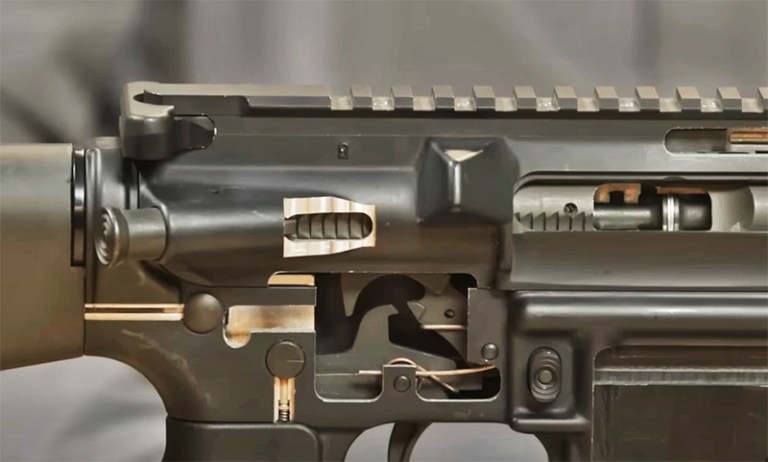
What does a forward assist do?
Put simply, a forward assist manually forces the bolt forward if the cartridge doesn’t go into battery. It is a physical option for resolving situations in which the return spring is unable to drive the BCG and bolt home. Read on to learn more.

The side view of an AR15 forward assist and bolt carrier group from the Brownells “Smyth Busters” videos. The forward assist is a push-button assembly on many AR15/M16/M4 type rifles intended to help push the bolt carrier forward in situations where the return spring has failed to do so. This might be the result of more than one factor, though it mostly happens to a dirty weapon (or one with some other obstruction).
FIND IT: Need a replacement or upgraded forward assist?
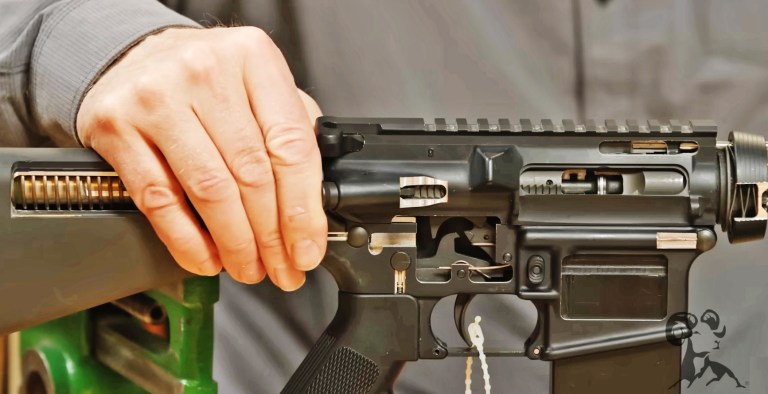
Brownells demonstrates the use of a forward assist using a cutaway model. Forward Assisting: the Argument
The entire notion of a forward assist (and the concept of forward assisting) is contentious. Many people believe it unnecessary. Detractors correctly note that Eugene Stoner, the weapon’s original designer, disapproved of the feature. Proponents will occasionally reference the use of a forward assist by Kyle Rittenhouse to put his weapon back into battery during his defensive shooting in Kenosha, WI in August 2020. They will also assert that it’s “better to have it and not need it” than the reverse.
The argument has been around as long or longer than that of 9mm vs .45 and any other three gun debates you might dredge up. The debate becomes more significant when discussing a defensive rifle than one intended for hunting, but even then there are strong, salient points pro and con.
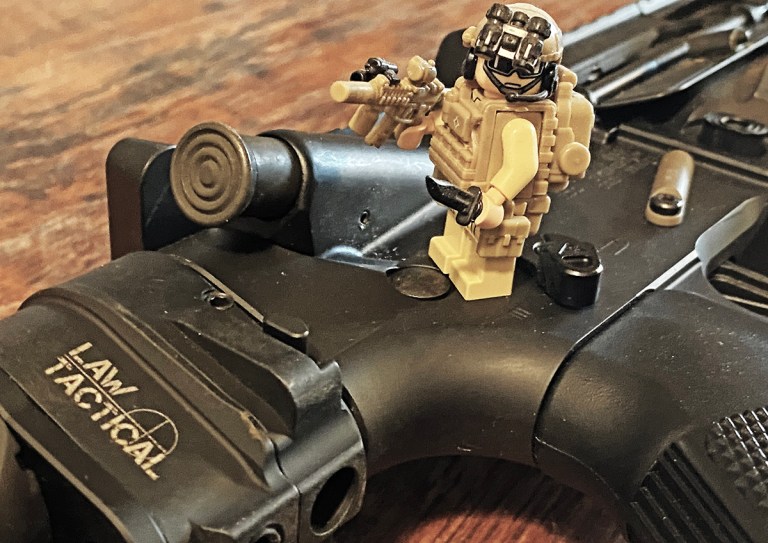
Closeup of the forward assist mechanism on a Ballistic Advantage upper receiver and Sharps Bros. lower receiver with LAW Tactical folding stock attachment. Guest-starring MAWL Man! 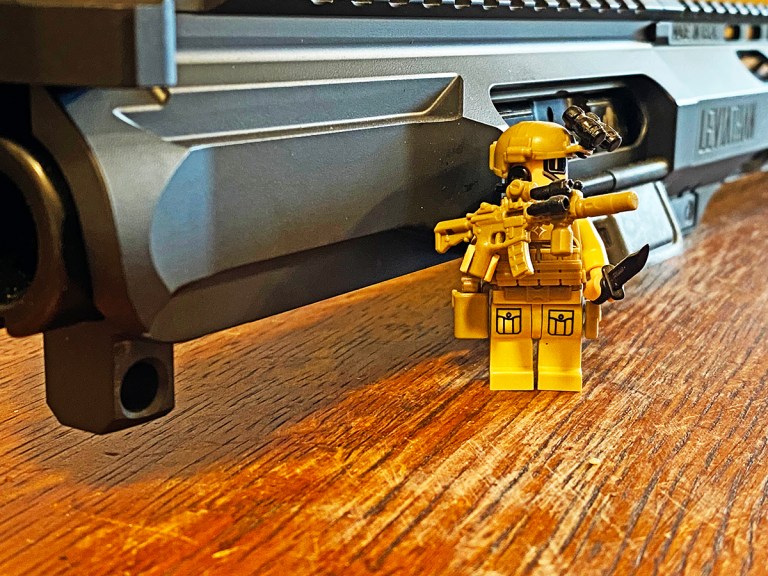
This forward assist assembly is a part of a KS-47 rifle, itself and AR15-style design that takes mags like this the XTech AK magazine shown (and other AKM style mags obviously). Do you need a forward assist on your AR15?
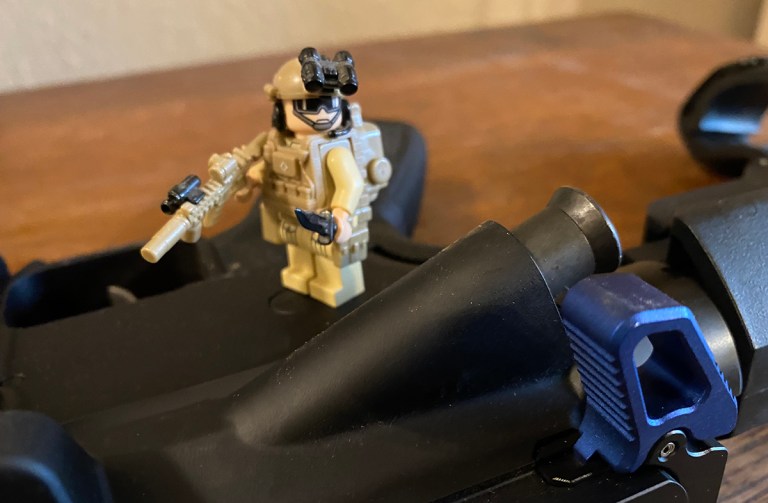
The variance between weapons that may or man not be a “slick side” vs. “assisted” may be found anywhere in the world one might find this broad family of weapons – as you can see here in the photo of a Palestinian fighter patrolling Jenin Camp (مخيم جنين), north of the West Bank adjacent to the city of Jenin. Photo by PJ Pendlebury, @pj_pendlebury. -
How to Choose Self Defense Ammunition: Your Life Depends On It
Just when you think you have ammunition figured out—training versus defensive versus hunting—it hits you: There are a lot of defensive loads on the market. How do you know which self-defense ammunition best suits your needs? Is one type of defensive bullet better than another? Read on to get the answers to these questions and a few more.

It does matter what ammunition you use in your carry gun. (Photo credit: NPR) What is Self-Defense Ammunition?
Self-defense ammunition is designed to perform in a certain way on human attackers. They’re made to expand on impact while simultaneously slowing down and creating a significant wound cavity. That might make you think of hollow point (HP) ammunition, and it’s accurate that many defensive loads are HPs, but some have different bullet types. The most commonly seen bullet types on defensive ammunition include:
- Hollow Point (HP)
- Soft Point (SP)
- Hollow Point Polymer Insert/Polymer Tip (such as Hornady FTX, Flex Tip)
- Jacketed Hollow Point (JHP)

Hornady Critical Defense is a long-standing, proven line of defensive ammunition. (Photo credit: Hornady) Is it Okay to Use Target Ammo for Self-Defense?
In short, no. Ammunition designed for target use is significantly different in design and performance than defensive loads. For example, full metal jacket (FMJ) ammunition does not expand on impact and has a tendency to over-penetrate. Because it doesn’t expand, it creates a narrow through-and-through hole instead of a larger wound cavity. Target loads aren’t made to stop threats, they’re made to practice your marksmanship on targets.
Types of target ammunition include:
- Full Metal Jacket (FMJ)
- Total Metal Jacket (TMJ)
- Total Synthetic Jacket (TSJ)
What’s the Best Self-Defense Ammunition?
The answer to this depends on your gun. Not all ammunition performs to its greatest potential in every gun. Taking the time to figure out which defensive load works best for you is worth the investment of time and money. Here’s what you should look for in self-defense loads:
- Reliable cycling
- Consistent expansion
- Fantastic weight retention
- Meeting FBI ballistic gel penetration standards
- Non-corrosive
What is Ballistic Gel Testing?
To better understand defensive ammunition, it helps to know what kind of testing goes into its creation. When it comes to judging penetration depth, the standard to follow is the FBI ballistic gelatin test. The FBI’s testing process was developed in the aftermath of the 1986 FBI Miami Shootout, an incident that left agents dead and the FBI searching for better ammunition and duty guns.

The aftermath of the FBI Miami Shootout lead to an enormous amount of studying and analysis and eventually resulted in the FBI’s ballistic gel testing protocol. (Photo credit: Tactical Tangents Podcast) If you’re looking for testing information, it will be available from most ammo makers but you can do your own testing as well. It simply requires strict adherence to testing protocol, which is why it can be a lot easier to research the ammunition and see what the manufacturer’s own testing shows.
The ballistic gel utilized by the FBI to adhere to their testing protocol is 10% ordnance gelatin that’s made using either Kind & Knox or Vyse 250-A. The percentage is calibrated according to weight. According to FBI research, this produces the best possible tissue simulant for testing ammunition. To test a gelatin block, a 0.177-inch steel BB is fired from a distance of 10 feet—which is measured from the muzzle of the BB gun—at a velocity of 590 feet per second. A variation of 15 feet per second higher or lower is allowed. The BB should penetrate 2.95 inches to 3.74 inches in depth.

Ballistic gel testing requires strict adherence to a number of steps. (Photo credit: Norma Ammunition) Other steps are taken for proper testing using ordnance gelatin, too. For example, the FBI stores their gel blocks in a refrigeration unit set to 40 degrees Fahrenheit and only removes the block immediately prior to testing. Also, a series of steps and specific barriers are used while assessing the performance of ammunition. Barriers utilized for testing include:
- Bare ordnance gelatin
- Heavy clothing
- Steel
- Wallboard
- Plywood
- Automobile glass
It’s important to note the barriers used are also quite specific, not random pieces of clothing or wood. They’re also used in combinations for testing rather than only on their own. And when it comes to automobile glass, it’s a specific glass set at certain angles.
A total of five test shots should be fired to collect an average. Shots are fired at a distance of 10 feet from the muzzle of the gun to the front face of the block of ordnance gel.
According to the FBI, the ideal penetration depth ranges between 12.0 inches and 16.0 inches. If a bullet fails to perform over 12.0 inches it’s considered an incredible failure; after all, one reason the FBI came up with this protocol is that their agents’ ammunition failed to penetrate deeply enough during the aforementioned 1986 FBI Miami Shootout. If it penetrates too far, it’s an over-penetration risk. The FBI also uses a point-based system in evaluating their results but for our purposes, the average penetration depth of five shots is enough.
Should I Train With Self-Defense Ammunition?
Yes, you should spend time training with self-defense ammunition. Defensive loads recoil and perform differently than target loads, so you need to familiarize yourself with point of aim versus point of impact and hone skills like rapid target re-acquisition.
How much you train with defensive ammo rather than target rounds depends on budget and personal preferences. Ideally, you’d fire at least one box of defensive loads for every couple hundred rounds of target ammo you go through. Of course, if you shoot at a higher round count, the balance will be different.
Will Self-Defense Ammo Work in My Gun?
Self-defense ammo will cycle in your gun. If it doesn’t, there’s a much larger issue at hand.

Your gun should reliably cycle self-defense ammo. If it doesn’t, take it to a gunsmith to figure out what’s wrong. (Photo credit: Glock) That doesn’t mean your gun will reliably feed each and every type of ammunition that exists. Some ammunition works better than others in different guns and it’s up to you to find out what performs best with the gun you carry. This is also why you need to spend time shooting various rounds at the range. With enough testing and practice you’ll be able to figure out what the most accurate, consistent performer is for your daily carry gun.
What Brands of Self-Defense Ammo Work Best?
“Best” can be subjective because it depends on a variety of factors but there are certain brands of ammunition that have proven themselves to be more reliable than others. Some of those brands include:
- Hornady Critical Duty
- Hornady Critical Defense
- Speer Gold Dot
- Federal Hydra-Shok
- Federal HST
- Remington Golden Saber
- Barnes TAC-XP
- SinterFire Special Duty
It can get pricey trying to figure out which defensive load works best for you and your specific gun.

Barnes ammunition is a proven reliable performer and their defensive loads are fantastic. (Photo credit: Kat Ainsworth Stevens) You can narrow the options down by reading gun reviews of your firearm model from reliable sources that include ballistics charts and by checking ballistic charts produced by ammunition manufacturers. Then it’s up to you to test them out for yourself.

Sinterfire produces frangible, lead-free ammunition, including some great defensive loads. (Photo credit: Sinterfire) Remember, you are your own first responder, and it’s your responsibility to make sure you’re as well-prepared as possible.

Self-Defense-6: There’s a lot of different defensive ammo on the market today. Take the time to read reviews before evaluating its performance in your carry gun. (Photo credit: Kat Ainsworth Stevens) What’s your choice of self defense ammunition? Let us know in the comments below.
-
Vertical Foregrip — Do You Need One?
Vertical Foregrip — Do You Need One?
The Vertical Foregrip (VFG) has been around for some time. In the earliest days, it could be seen on larger automatic rifles used in the military. In the 1930’s it became a standard attachment to the iconic Thompson submachine gun, better known to most as the “Tommy gun” or “Chicago Typewriter” used by the mob throughout the US. At the time, the VFG was used to maintain better control of an automatic rifle, often fired from the waist or shoulder position.
While it was common on certain rifles back in the day, the VFG rage in the gun world didn’t really happen until the SOPMOD kit was adopted. If you are not familiar with SOPMOD (Special Operations Peculiar Modification) program, it was an accessories system used for the M4A1 system in the mid-90s.

M4A1 Tactical Setup. (Photo: Minutemanreview.com) The military was using the M4 in the mid-80s, but the SOPMOD kit wasn’t adopted until 1995, which included a VFG to accommodate all the attachments that were being added to the M4. The SOPMOD kit was used by the USSOCOM (United States Special Operations Command) and that is what started the craze for gun owners to add a vertical foregrip to their rifles.

A vertical grip is placed on this BCM AR-15 rifle to use as a hand stop with a pressure pad for the light placed above for easy access. Why was the vertical foregrip vital to the M4?
The M4 was a shorter version of the M16A2 rifle and allowed special forces to carry shorter rifles during tactical operations. Because the M4 had such a short handguard, however, gripping the M4 became a growing problem as more accessories were added to the short rail system. As they added IR illuminators, IR lasers, white light, and optics to the M4, the need for a VFG was essential so you could keep a good grip on the rifle during combat.

Because of the short rail system on early models, a VFG was needed when multiple accessories were attached to the rail. (Photo: Twitter) The VFG is not the best choice for accuracy over longer-range shots but worked well for a short rifle with a lot of equipment attached to a short rail. As technology advanced, these attachments were combined into single units allowing the weapon to be lighter and not need as much rail space. We also started seeing longer free-floating rails become standard on most AR-style rifles, giving us much more room to add accessories and still leave room for a good grip.

Are there other reasons for a VFG?
Over the years, the vertical foregrip has become a common attachment to see on rifles, but many people who use them may not know why they should or should not have one on their rifle. The most common answer I get when asking people why they use a vertical foregrip is they think it helps with control and accuracy. While on some types of weapons, a VFG can help with control, a standard vertical foregrip is not going to help make your rifle more accurate. There are some reasons why someone may still want to use one on their rifle, but it all depends on what you’re using it for and what works for you.
A few reasons why you may need a VFG on your rifle:
1. C-Clamp Grip
When using the c-clamp style of gripping with your support hand, the shooter places their thumb over the top of their rail and their remaining four fingers grip the front of the VFG, pulling the weapon into their shoulder as they shoot. This is a modified c-clamp grip as
the traditional c-clamp grip used an outward-facing hand when shooting with the support of a structure at your support hand, but we won’t get into the details of that right now. When using a VFG in this style, I like to call it a modified c-clamp grip. This style of grip does allow for quick target acquisition in CQB and helps to control recoil. For this style of shooting, the VFG must be close to the end of the rail on your rifle for the best muzzle control.
The modified c-clamp grip uses the VFG as a backstop to pull the rifle into your shoulder while shooting. 2. Carrying in Low-Ready
The need to carry your rifle in low ready for long periods of time without the use of a sling probably wouldn’t apply to many people. But some militaries around the world, run drills that require their soldiers to carry their rifles for long periods of time at low ready. A vertical foregrip placed a little closer to the mag well can help make the rifle much more comfortable to carry.
3. Protection from Heat
With ammo costing an arm and a leg lately, there are not many of us that just go out and burn up ammo as we did years ago. However, if for whatever reason you need to be able to fire fast enough and long enough that heat becomes an issue, a vertical foregrip is almost essential when your rail is hot enough to burn right through your gloves.
4. Barrier Stop
For those that like to shoot from a supported position, a VFG can be effective when resting your barrel over a support (like the top of a wall) and pushing the rifle forward using your VFG as a barrier stop. This method can make rapid shots a longer distance for long periods of time possible. I know of several hunters that use VFG for this reason, as they can wait long periods of time and then fire without moving their rifle.
5. Short Barrel Rifles
Another reason to use a vertical foregrip is when carrying a sub-machinegun or short-barreled rifle (SBR). When you have a very short barrel, having a VFG may be the only way to get good control of the weapon unless you use a mag-well grip, which I am not a fan of, but that is for another time. It is important to understand however that an AR pistol cannot have a VFG. Adding one to it would classify it as an SBR which must be registered with the ATF.
Can you use the vertical foregrip in combination with other grips?
Like many things in the firearms world, tactics have changed over the years and the vertical foregrip has not been left out. There has always been the traditional rifle grip, and then we started using the VFG. We also had the mag-well grip that swept across the rifle world and now we have merged into a little bit of everything. When training in different law enforcement circles, almost everyone uses a VFG as support for an inward-facing c-clamp grip or as a hand stop for a wrist-over grip. This is where we are starting to see the other style of rail grips, like the angled handgrip and hand stop, become popular.
So, are vertical foregrips necessary?
The answer depends on you. What are you putting it on, and what is your reasoning for needing it?
Maybe something works for you that doesn’t for others. Here is the advice I would give: don’t put anything on your gun just because “that’s what everyone else does.” As you train more and hear from others, you may change your thoughts from time to time and that is a good habit to be in. Just make sure you know why you are using any accessory on your rifle and whatever you decide, make sure you train, train, and then train again.
-
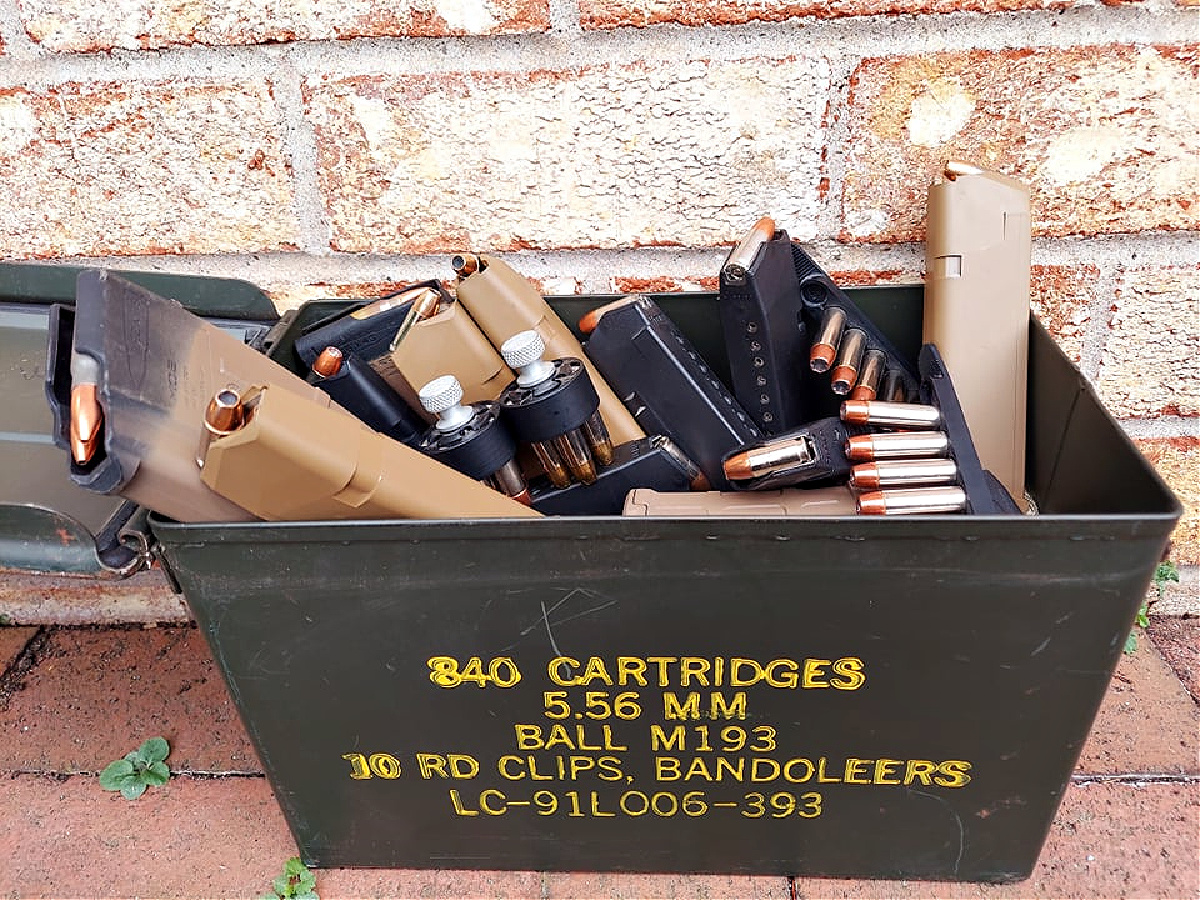
How Much Ammo Is Enough?
FBI statistics suggest that the average gunfight takes place at approximately three yards, expends three bullets, and takes about three seconds. Well, those are some nice, tidy figures, aren’t they?
Does that mean all of us who are carrying spare magazines are wasting our time and effort?
Perhaps not. Today we’ll examine some factors that are at play during real gunfights, and consider how they apply to the real world and how they affect us.
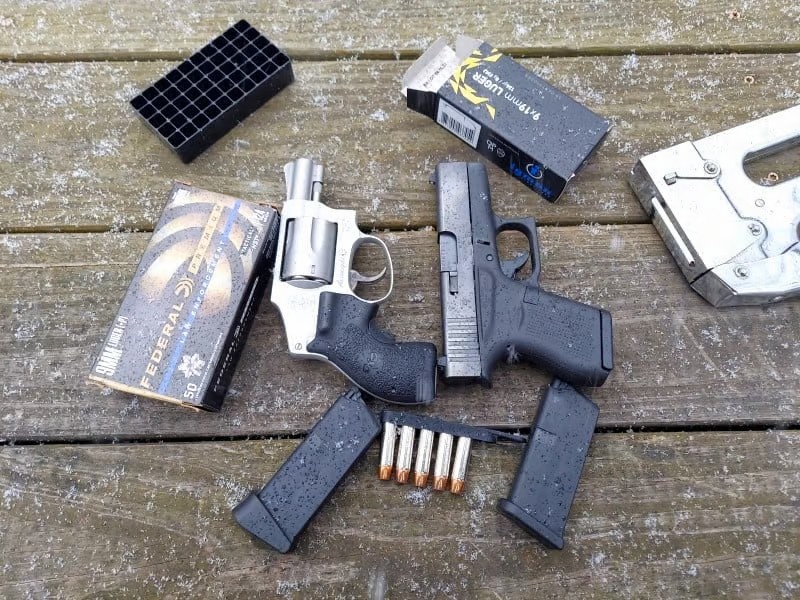
Options abound! It’s up to you to decide what might work best for you. Different people have different needs. Handguns suck at stopping people.
Sorry if that offends you, but it is the honest truth. People are sometimes capable of absorbing a ridiculous amount of pistol bullets and still continuing to function. A search online will reveal many videos of people being shot repeatedly and acting as though nothing has happened to them. During my time working in the prison system, I spoke to scores of inmates who had been shot (there’s nowhere else on earth to find a more concentrated source of people who have been wounded, aside from hospitals, than the prison system). I interviewed men who were shot with every caliber imaginable, from .22 Long Rifle all the way up to 12 gauge. Some had been shot once, others over a dozen times. This experience has given me good insight into how humans react when they are shot.

Criminals are a great source of information for research on violence and wounds. The author learned from them firsthand.
What is it that makes people able to withstand gunshot wounds?One major factor is adrenaline and the other chemicals that our bodies release during critical incidents. It dulls pain, gives us tunnel vision, shuts our hearing down, helps stop bleeding in extremities, alters our perception of time, and reduces our ability to think and use fine motor skills. A large percentage of shooting survivors report that they did not realize they’d been shot until after the incident was over, claiming that they never felt pain until well after being shot.
There is only way to instantly stop an attacker 100% of the time: a central nervous system hit to the spinal column or the brain. Even blowing out the heart might not stop a bad guy instantly, as there is enough oxygen in the brain to continue functioning for about ten seconds (a lot can happen in ten seconds).
How much ammo does it take to stop a bad guy?
Given all of this, it might take ten or more pistol rounds to stop a bad guy, depending on some of these factors. One bad guy. But do bad guys always operate alone? Not necessarily. In fact, they often operate in teams, which means we may be facing two or even three bad guys.
Let’s say we’re facing two bad guys who confront us with deadly force and we need to respond in kind to save our life. We land several rounds on each of them, and they are hopefully stopped from killing us.
Will one magazine of ammo be enough?
How many rounds does your handgun hold?
The entire spectrum of capacity: from left to right, 5-shot .38 speed loader (5 rounds), Glock 19X (19 rounds), Glock 43X (10 rounds), and AR-15 Pmag (20 rounds).
Let’s go a step further. During real deadly encounters, people tend to move around because they don’t want to be shot or stabbed, or otherwise harmed. So it’s not unusual to see participants of altercations moving about rapidly and erratically.
Have you ever tried shooting someone who is darting about?
If not, I suggest participating in some “Force-On-Force” training, which consists of using projectiles such as Simunition (plastic bullets filled with dye) or Airsoft guns, which shoot plastic BBs. While these aren’t “the real thing,” they do give some approximation of what gunfights are like, in that you’re firing projectiles that cause some pain and give incentive not to get hit. During scenarios, participants routinely experience the adrenalinedujp and some mild effects of what a real gunfight is like. It’s not total reality, but it will give people a taste of what happens. More importantly, it will illustrate how people move under stress, and how easy it is to miss assailants.

Woman pointing a shotgun to thief while the thief are coming in for robbery. Concealed carry weapon for protection themselves concept. Even at very close range, it’s not hard to miss a person during an adrenaline dump. Don’t believe me? Do a video search. People only a few feet away are sometimes missed. I can hear scads of gun range commandoes out there right now, claiming, “No way, I’d never miss, I can hit targets at 50 yards away!” Well, maybe you can. But those targets aren’t trying to kill you, which makes things totally different.
We know that bad guys often move during gunfights. So do good guys. As such, both parties are likely to be moving. Which means you are moving and your target is also moving.
How good of a shot did you say you are?
Consider that even the police, who train regularly in range qualifications, have a miss rate during real shootings that exceeds 70%. Remember that adrenaline dump that I was telling you about that occurs during deadly force situations? If you’ve never experienced it, the first time is a gargantuan jolt to your system. Simply put, it is devastating and can throw you off of your game in a way that I cannot even begin to describe. Your shooting skills go to hell, along
with your dexterity.Taking these factors into account, how many rounds do you believe you might have expended by now in the gunfight? Hell, I’ve lost count myself.
Personally, I like my Glock 43X the most out of all my handguns. It holds ten rounds plus one and the grip fits my hand perfectly, and it’s thin, so it conceals wonderfully. Normally, I carry two spare magazines, which give me 31 rounds total. Do I believe I’ll need that many rounds of ammo? Probably not, but I’ve never heard anyone who’s ever been in a shootout remark that they wished that they’d brought less ammo.
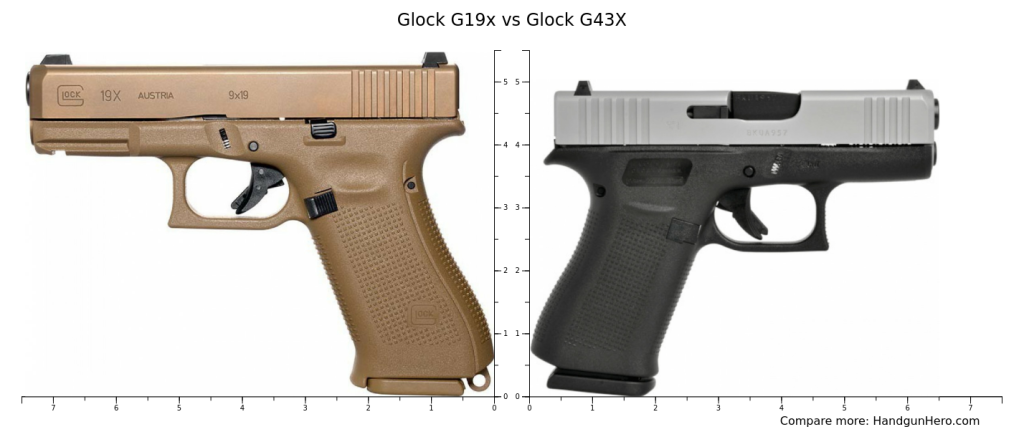
The Glock 43X is a joy to carry due to it’s thinness. The Glock 19X is King of capacity carrying 19+1 rounds. Scenario: facing two bad guys, the gun battle erupts.
You fire at the first guy, missing twice and landing three solid hits as he goes down. You engage the second bad guy (while he’s firing at you), and miss three times, landing four hits. Oops. You’ve expended 12 rounds of ammo. Does your handgun even carry that many? If not, you ran dry somewhere in the midst of this deadly encounter.
Spare Mags
Another thing to consider is that a lot of pistol malfunctions can be traced to the magazine. So having spare mags is a Good Thing. Aside from that, if you recall that I mentioned that adrenaline makes your fine motor skills degrade, it’s very easy to fumble a magazine change. So while someone is trying to kill you, it wouldn’t be completely off the wall that you fumble the mag change, sending your magazine skittering across the pavement. My, my, wouldn’t that make for a wretched day!
Gosh, gunfights can be complicated, can’t they? Yeah, the real world sucks. And TV shows don’t always portray reality. More suck.
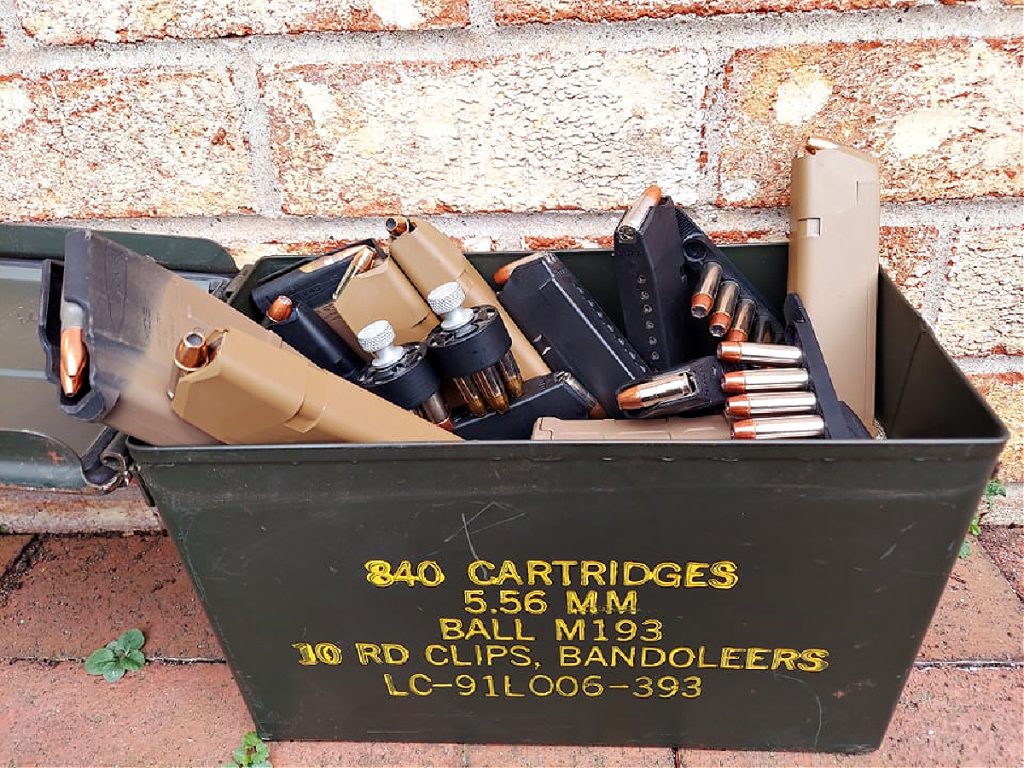
It’s always nice to have more than enough ammo. How much is practical to carry? How about revolvers?
We’d have to be insane to carry one, right? I mean, with their limited ammo capacity, it would be suicide to even consider the prospect, wouldn’t it?
Despite the insanity of it, I do carry a revolver in specific circumstances, and I’ll tell you why. When I’m engaging in strenuous physical activity, the snubnose revolver that I carry is compact enough that it doesn’t dig totally into my stomach when I’m bending over and lifting heavy objects. I carry AIWB (Appendix, Inside the Waistband). I won’t say it’s so comfortable that I don’t know it’s there, but I can make it work. Carrying an auto under those circumstances is simply painful. The S&W 642-2 simply works for me because it has a smaller footprint and is very light. And because it’s a revolver, it’s pretty damn reliable. Wheel guns are not ammo sensitive; they will fire pretty much whatever you can stuff into them because they obviously have no gas or recoil system.
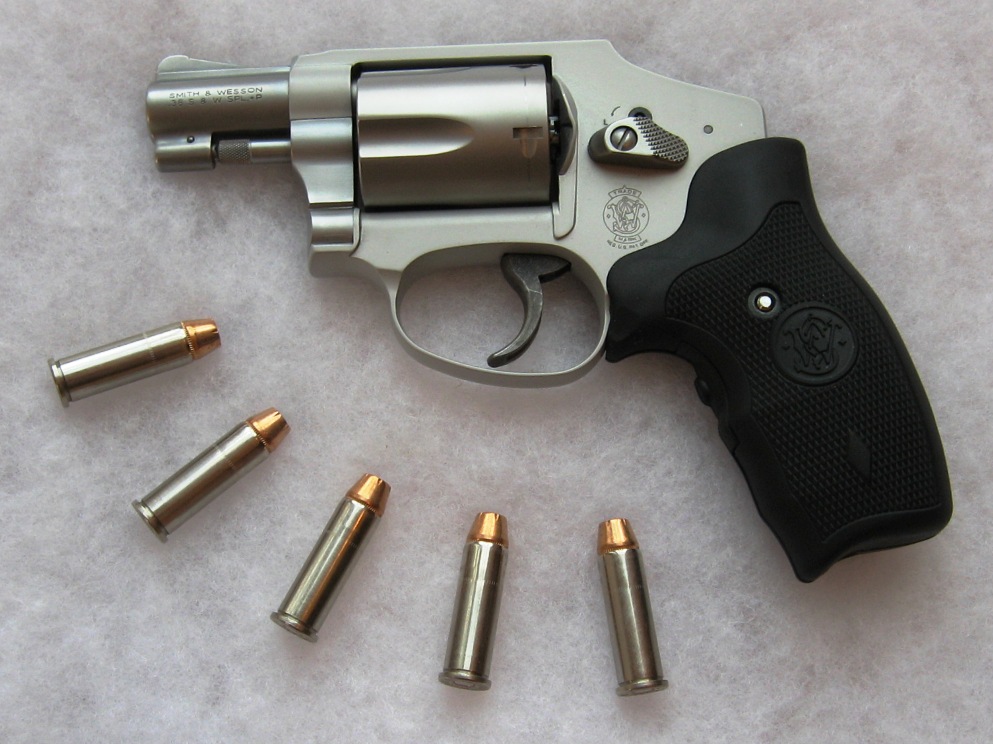
Small and light, revolvers can be very easy and convenient to carry. It only holds five rounds of ammo though, so it is a compromise, make no mistake about it. However, it beats the alternative, which is to only carry a knife. Loaded with Speer Gold Dot 135 grain hollowpoints, I believe the revolver can allow me to handle quite a few scenarios. Sure, it has drawbacks, but then we’re back to the “life sucks” thing. Having the revolver on my person beats having my auto outside in my car.
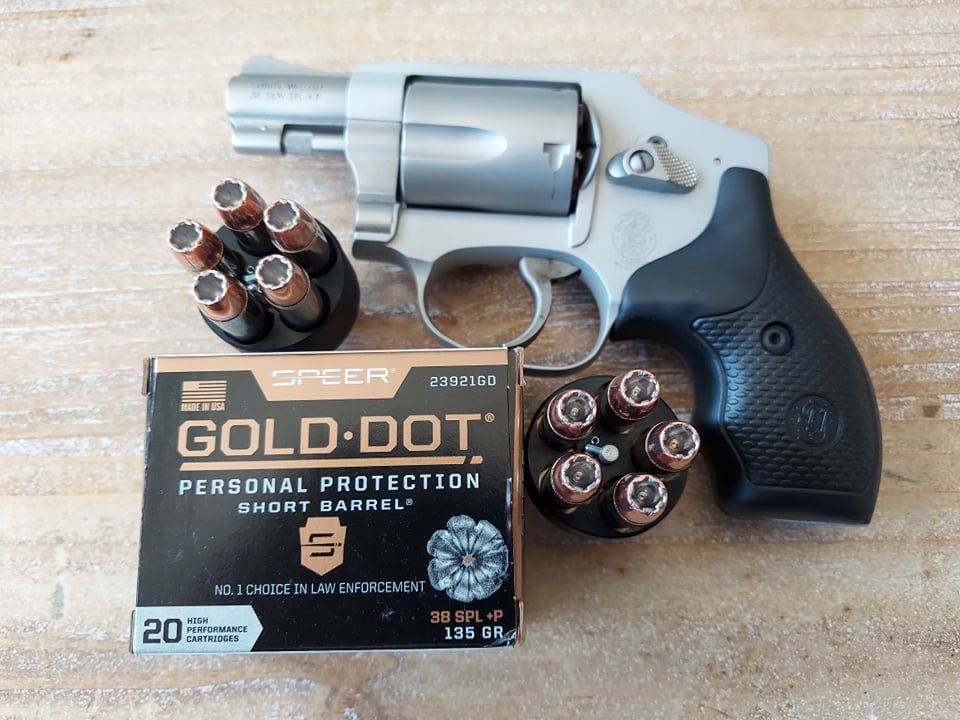
Small and lightweight, the S&W has obviously low capacity.
Back when the earth was cooling and the last of the dinosaurs had just died off, yours truly was issued a revolver by my agency as a rookie. Over the years, I put tens of thousands of rounds through revolvers, and my confidence in being able to run a wheel gun went skyward.Another thing I considered when choosing the small revolver was the mission for which I intend to use it, which is deep concealment. When I carried the little S&W on my last job, none of my coworkers nor customers had any idea that I was armed, and they never would have unless things went exceedingly badly. Are there tiny autos that would fill that bill? Definitely. In fact, I did have one that, size-wise, was perfect. However, it was less than perfectly reliable, and so it had to go. To be blunt, the S&W revolver just works for what I need. As an added bonus, it’s extremely light. I round out the package with two spare speed strips, so I have 15 rounds of ammo total.
I carry the snubby with one thing in mind: to protect myself and break contact with hostiles, getting myself to safety. Does that mission differ when I’m out and about with my family? Yes.
When I’m out with my family, my mission is to protect them. However, when confronted by dangers such as an active shooter(s), it is a far more involved task to get my family to safety than if I were alone. Herding my family to safety may involve me making the decision to confront the shooter(s) if he is between us and an exit. As such, I may need to take the battle to the enemy, which an autoloading pistol is likely more suited. That’s why I normally carry an auto when I’m not engaging in strenuous physical activity.
I like having the ability to choose the hardware for the mission.
That said, I only own a couple of handguns, so it’s not like it takes me fifteen minutes to peruse a vast collection for just the right tool for the job when I’m getting dressed in the morning.
At times, life is about compromises. Sometimes we’d enjoy having something belt-fed, but we might have to use a handgun with lesser ammo capacity. Training and practice can help increase our chances of survival and success.
Am I trying to sway the reader one way or the other as far as what weapons to carry? That’s not really the scope of this article. Rather, I wanted to raise your awareness concerning some of the many factors that occur in real world conflict so that you might be better educated in selecting the weapons system you feel comfortable with. If I managed to get you thinking about how crazy armed conflict is, then this article did its job.
I know folks who carry a mini revolver in .22 Long Rifle that holds four rounds. For them, they feel that it is enough ammo for their needs. If it works for their needs, who am I to tell them they are wrong?
What’s the best handgun to carry?
The one that you have with you when you need it. Something is better than nothing.

It’s up to you to decide what will work best for your needs. My hope is that this limited amount of information in the article spurs the reader to engage in some of his own research as to how humans react in conflict and to injuries, as well as how real-life battles play out. Good luck!
-
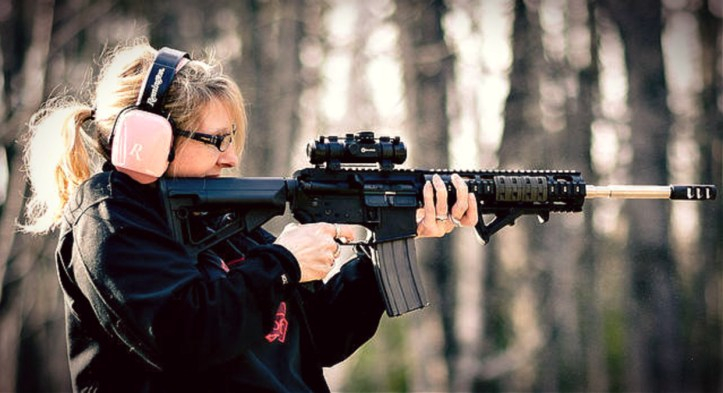
What’s the Best AR-15 for Women?
As a woman who works in the firearms industry, I’m often asked “what’s the best AR-15 for women?” What the question usually implies is what’s the best AR-15 for someone small in stature. And it isn’t just women, really. Sometimes men are small. And sometimes both men and women are small (mentally speaking). Remember when a verklempt CNN reporter went to the range to do some reporting on the AR-15, and cried after pulling the trigger? Pepperidge Farm remembers. It was all too much for him, what with the loud noise and unbearable recoil. Rumor has it he still has bruises from the horrible kick.
In all seriousness, the almost pantomime play acting of this journalism and countless Hollywood renderings have those who don’t know any better believing that the AR platform is all but unmanageable by anyone who hasn’t trained as a Navy Seal. This is bogus, at best; the AR-15 is ideally suited for new shooters, and both women and men of small stature.
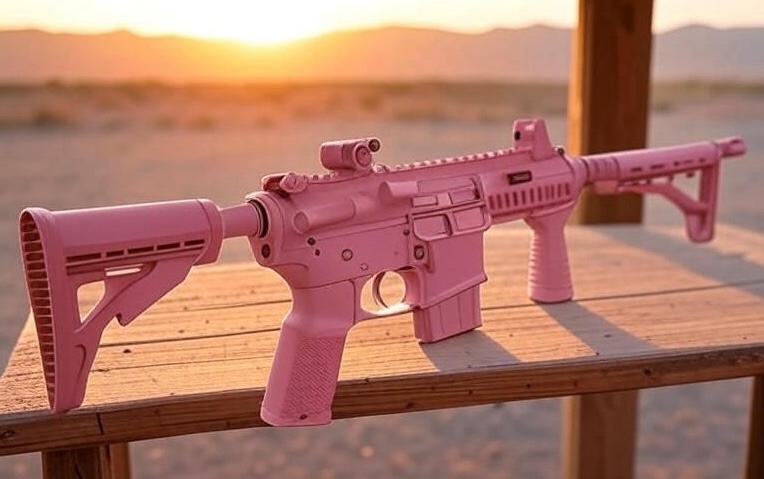
Too often, men who run gun companies try to find the best ar-15 for women. And, like this AI generated image, they simply have no clue. They think pink is the answer. Let’s assume you’re relatively new to guns
Narrowing down an ideal platform–like handguns or rifles–depends on numerous variables like your skill-set and physical size. And it is much more than simply painting a gun pink, or Tiffany blue, or some hideous shade of purple.
For those new to guns, or with limited experience, going to a gun store can be daunting–there’s so much to choose from and counter staff can be intimidating and pushy. And this experience is often worse for women for all the reasons you’d expect.
Armed self defense shouldn’t be gendered. Some women carry handguns. And some, like this Florida woman who used an AR-15 to protect her husband and daughter from from violent intruders, are capable with long guns. Here’s the story, as related by her husband.
“Them guys came in with two normal pistols and my AR stopped it. [My wife] evened the playing field and kept them from killing me,” King said.
Hats off to this woman who stepped up to protect her family. This story exemplifies the need for legal firearm ownership for home defense.
But at a closer look, the story tells us something about the firearm itself. Even though there is plenty of political backlash against the ‘scary-looking’ AR-15 Modern Sporting Rifle (MSR), it remains one of the most popular rifles on the civilian firearms market for recreation, competition, hunting, and–as in this case–home defense. Relatively affordable and available, AR-15’s are known to be effective, yet manageable firearms for people of all statures. As such, they are particularly beneficial as home-defense weapons for women.

Photo source: NBC. Those in the know can recognize that this woman is still getting comfortable behind the rifle. The support hand isn’t holding tightly. She’s way too far from the rear sight. That said, she’s taking the first steps to understanding how this gun works. So…. What’s the best AR-15 for Women?
This answer depends on how you define a woman. If we’re drawing on stereotypes, we would assume a woman to be lighter and possibly shorter than the stereotypical male. Her shoulders may not be as wide or as physically strong. Her hands may be smaller and her grip strength less substantial. Still a well-built AR-15 can weigh a comfortable 6 pounds, naked, and the inherent modularity of a carbine-style build would suggest that this is an ideal gun for anyone who might be described as “small.”
Shotguns, lever actions, bolt actions, pistols, revolvers…. The AR is one of, if not the single most adaptable rifle platform available. If you’re 6’6″ and weigh 300 pounds, the AR is almost too compact–tall men (and women who are 6’6″) have trouble getting the length-of-pull needed on ARs. If you’re 4’10” and barely break triple digits, though, the AR fit you, perfectly.
Women, like the rifle’s we’re here to talk about, are adaptable.
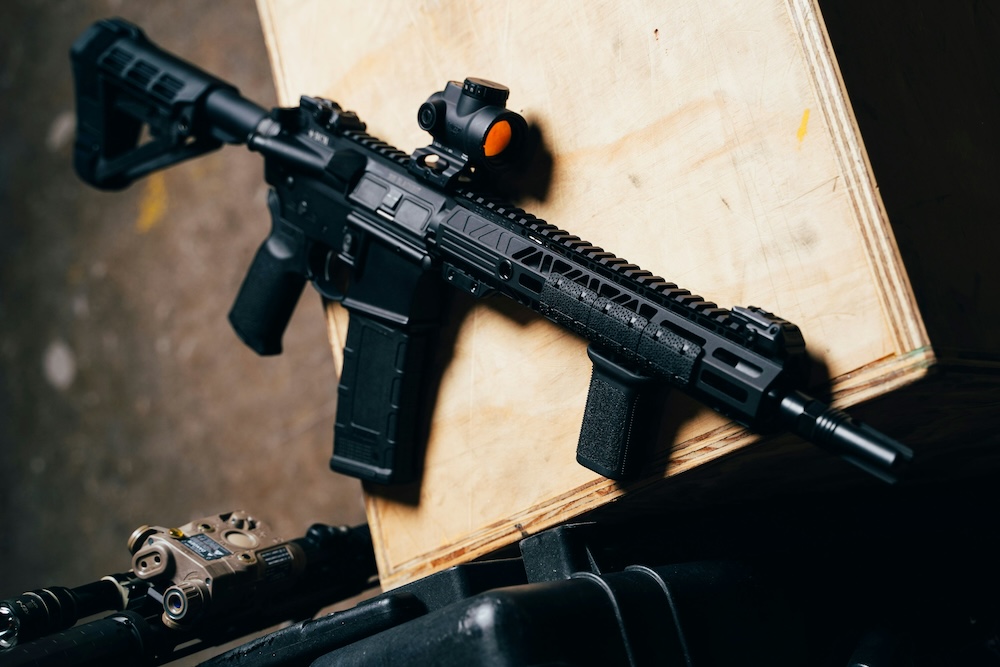
Find a solid rifle, then modify it to fit your needs. An AR-15 is an ideal place to start. With training and practice they can, and do, learn to operate all kinds of firearms. But who doesn’t appreciate owning and operating a firearm that fits their own physical dimensions? Some women have short arms and smaller hands. Because of that, there are several AR-15 features that women shooters can benefit from.
I’d contend that there’s no one-best-option (if you were looking for a make and model of rifle) but rather a style of AR-15 rifle itself that is the best option for the reasons that follow. It just happens to be the most common AR set up made.
Lightweight and Easy to Maneuver
AR-15’s are relatively lightweight (8 pounds +/- in the most common configurations). This makes them easy to maneuver, and that has positive effects on accuracy, speed, and safety. Since they are shorter than most standard hunting rifles (their barrels are often 16.5″), they are easier to store, move, and use around corners and obstacles inside the home.
The gun can be operated one handed, which speaks to it’s ease of operation. This is a specific benefit to physically impaired individuals. Gun owner and writer Mary Chastain explains it this way:
“You can use it with one hand, which helps me,” she said. “My entire left side is handicapped, caused by brain trauma at birth. There are many guns I cannot use. The AR is perfect because I can use the functions with only my right hand. The lightness of the gun makes it easy for my handicapped left arm and hand to hold it.”
Understanding the AR-15’s Recoil
The AR-15 chambered in 5.56 has a really mild recoil. Compared to other rifles and most shotguns, women and other people of smaller stature can operate it with more confidence. This assists with target acquisition, and makes it possible to make quick follow-up shots if needed. The “kick,” despite what some reporters want you to believe, is almost non-existent. Talking about this is hard, though–it is best to try it out.
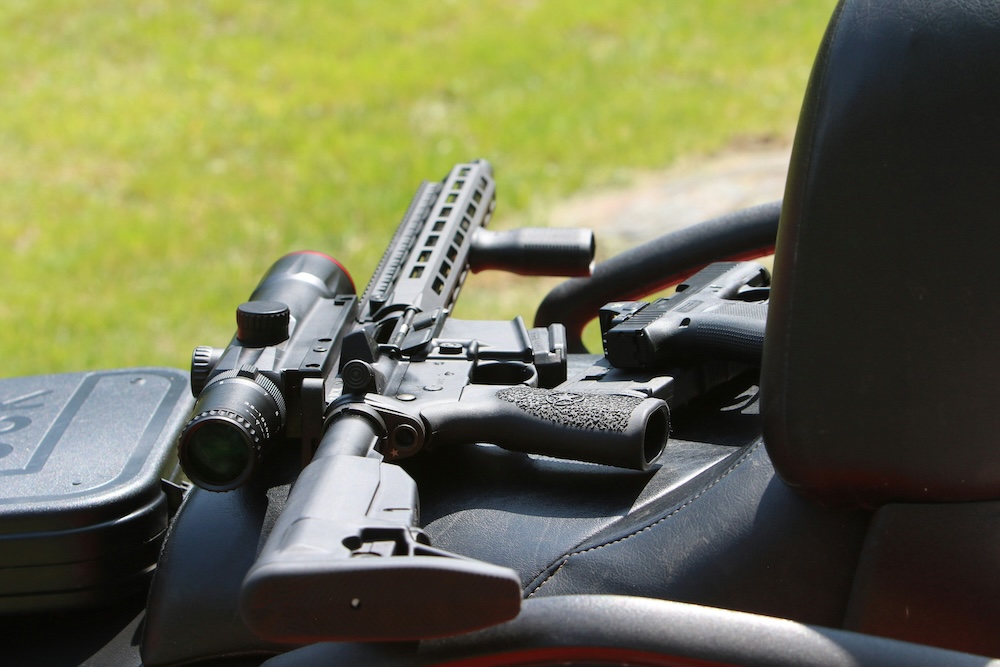
The sound of an AR-15 can be intimidating to a new shooter. But the recoil is not. Shooting a 5.56 AR (or a .223–virtually the same round with a different name) is easy on the shoulder. There’s little kick, so you won’t fatigue easily and you won’t bruise like you might with a heavier shotgun. This means you can practice more, and that’s a must. Having a gun means nothing if you aren’t capable of shooting it. It would be like having a car, but not knowing how to drive. What’s the point?
And both .223 and 5.56 are readily available. Check out online retailers like AmmoToGo. You’ll want to keep a healthy amount on hand, and keep enough to shoot, too.
Adjustable Length of Pull (LOP)
AR-15s are highly customizable. There are many accessory options nowadays for AR-15s, but the easiest to adapt and change out is the furniture (the stock, grip, and handguard). Most stocks are easily adjustable, allowing for a customizable length of pull. This is what allows you to get your eyes in just the right place behind the iron sights (or behind a red dot or scope).
A firearm that is too large for the the shooter to manage can be dangerous. If we fall back on the stereotypes, women have shorter arms then men, which means they’re more likely to need a shorter LOP. Women who desire a personal home-defense gun that is tailored to fit their stature can do so with an adjustable stock, ensuring that the trigger is at the optimal position for their needs.

Woman holding a custom tactical AR-15 rifle. NICHOLAS ERWIN / HTTPS://CREATIVECOMMONS.ORG/LICENSES/BY-NC-ND/2.0/ The Pistol Grip
AR-15’s are designed with a pistol grip. As this is where your shooting hand lives, it has to be comfortable. While most pistol grips aim for an average hand size, there are fatter grips and slimmed down versions, too–and they are super easy to swap out.
The finer customizable details
There are many accessory options nowadays for AR-15 owners. Beyond adjusting the LOP, owners can upgrade the trigger, find a more ergonomic hand-guard, change barrel length…. Thanks to accessory rails, users can also choose from the wide assortment of weapon lights and opticwhat’s the best ARs that are available.
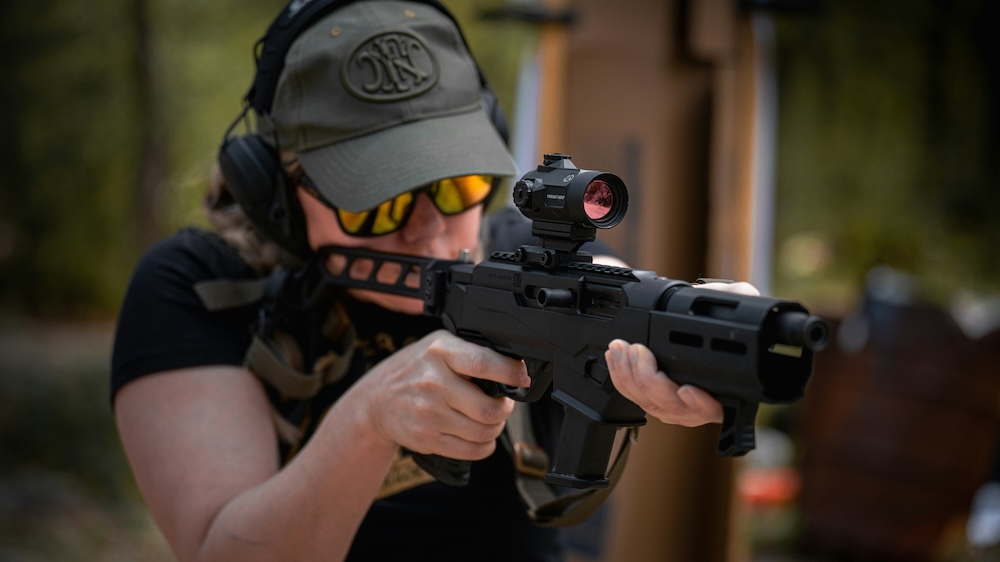
The skills that women build shooting an AR-15 can be translated to many guns. Most of them have similar controls. AR-15 for Women’s Home Defense
Each of these features make it clear that the AR-15 deserves some respect as a home-defense firearm that is especially useful for women. It’s lightweight, adjustable, and can be customized to fit individual women’s needs.
-
Rifling Twist Explained: Why Your AR-15 Is Inaccurate
You bought your first or next rifle and gleefully head to the range for some much-needed RnR and, hopefully, get your new purchase sighted in. You brought along good quality ammunition and–from the bench–you are able to walk your shots into the bullseye, adjusting the sights accordingly. Then you proceed to go for groups only to find that your new AR-15 doesn’t shoot straight.
Maybe its the ammo? You switch to premium match grade ammunition but the results are the same. Instead of a golf-ball sized group, you get a grapefruit. This can happen for a few reasons, but the most obvious and easiest to remedy is to check your rifling twist rate and see if it is compatible with the grain weight of your ammunition. Here is a rundown on rifling twist rate, how it affects accuracy, and which rate may work best for you.
Rifling Twist: An Old Spin on Rifle Accuracy
Rifling is a series of spiral grooves inside the barrel that spin the bullet before it leaves the barrel. This spin stabilizes the bullet in flight through centripetal force. That spin also balances out minor imperfections in the bullet that would otherwise make it go astray. But how fast the rifling grooves turn inside the barrel has a direct impact on accuracy.

Rifling twist rates are an often-overlooked aspect to accurate shooting. Look down this bird cage and you can see the start of the twist inside the barrel. Depending on grain weight and profile of the bullet, a given rifling twist might be too slow to stabilize the projectile. In that situation, the bullet will not have spun up enough to fly true once it leaves the muzzle. In a worst-case scenario, the bullet will keyhole (tumble in flight) and strike a target lengthwise instead of on the nose–if it hits the target at all. At best, the bullet hits the target more or less nose first but with unreliable accuracy.
Twist rate: Know your numbers
With any rifle, it is possible to achieve a bullet and rifling combination that simply will not stabilize. For example, hunting rifles chambered for the .243 Winchester arrived from the factory with a 1:10 twist rate (or 1 revolution in 10 inches of barrel). This served well as the .243 was intended as a dual varmint/deer cartridge and could stabilize rounds ranging from 58-100 grains. Target shooters have come to love the .243 Winchester, but heavier, more aerodynamic projectiles are hard to stabilize. Those who like the .243 will use a custom barrel with 1:8.5 or faster twist rate 115 grain rounds.
Paradoxically, it is also possible to over stabilize a projectile. Fast twist muzzleloaders using 1:30 or faster rates work well with conical shaped bullets but not round balls, where a much slower twist rate (like 1:66) can achieve better accuracy.
The Changing Twists of the M16/AR-15 Platform
The original M16 platform as it debuted in late 1963 in the .223 Remington cartridge used a 20-inch barrel with a 1:14 twist rate. In these early days, a version with a 1:12 twist rate was fielded. Quickly, a 1:12 twist rate became standard with the M16 and M16A1 platforms. Both rifles used 55 grain bullet weights.
But the desire for extended range led to the development and adoption of the M16A2 in 1983. The platform uses the 5.56x45mm NATO cartridge and has a 1:7 twist rate. The 1:7 twist rate paid dividends when going beyond standard 55 grain M193 ball ammunition, as this faster rate could stabilize the new M855 and SS109 armor piercing and tracer ammunition, which used a 62 grain bullet. The same twist rate has endured the introduction of the M4 platform and the later introduction of the Mk 262 77 grain precision round in 2002.

The rifling twist rate will normally be stamped on the barrel of an AR-15, but not necessarily. AR-15 Rifling Twist Rates: Best Practices
On the civilian market, the AR platform is available in all the aforementioned rifling twists as well as a few more. 1:14 twist rate rifles are highly unusual to find. Many budget AR-15s come with a 1:8 or 1:9 twist, while 1:7 rifles run the price gamut. Most rifles have the rifling twist rate stamped on the barrel. If that is not present, you can swab the bore with a cleaning patch and cleaning rod. Count every revolution and take it into account with the barrel length of your rifle to find the twist rate. When all else fails, try a variety of ammunition and see which one your rifle agrees with most.

55 grain ammunition is bog standard for many 5.56 and .223 Remington loads and shoot well in most AR-15s. But you might want something heavier for longer range shooting and big game hunting. It pays to have a rifle that can handle those rounds. Although all 5.56 NATO and .223 Remington ammo will work in the AR, the twist rate does limit bullet selection for downrange accuracy. 1:9 twist rifles work well with lightweight 45-50 grain varmint loads and conventional 55 grain ammunition. In my own shooting using my Smith & Wesson M&P 15 with a 1:9 twist, I can achieve groups just over one inch at 100 yards using 55 grain FMJ boat-tail ammunition.
Switching to 62 grain ammunition widened my results to 3 inches. With 77 grain match loads, the group is measured in feet, not inches. Depending on what you are looking to shoot, this sort of accuracy will not suffice and 55 grain ammunition may be light for the task. 1:8 twist guns are not as common, but work well with those lighter-grained rounds up to 62 grain ammunition. 1:7 twist rifles are the Goldilocks option, since they will stabilize any conventional 5.56 or .223 Remington round to be found.
Which twist rate is best for an AR?
For a do-it all AR, which is why most of us own AR-15s, the 1:7 and 1:8 twist rates are common. The 1:8 is a standard for many manufacturers of entry-level barrels and rifles and works well with 55 grain bullets–the most common weight for AR ammo. Test out heavier 62 grain or 77 grain ammo.
The rule of thumb is this. Heavy rounds need faster twists. Lighter rounds need slower twists. What do you want your gun to do?
Once you know what you want (like a do-it all rifle, a rifle for long-range punch, a fast accurate varmint gun, a suppressed SBR…) you need to pick out a variety of ammuntion and see what works best. Start with boxes of different makes, grain weights, and bullet types. Find the right one, and then buy in bulk from someone that specializes in ammo like AmmoToGo.
Take A Spin with Rifling Twist
As with any rifle, it is easy to get bogged down with AR-15 upgrades and accessories. But before you slap on that new handguard or even loop in a sling, it bears knowing what kind of ammunition your rifle is likely to shoot well. While most rifles are more accurate than the one squeezing the trigger, equipment does matter. Understanding rifling twist is key to making sure you get your hands on the best possible ammunition and rifle for the tasks you anticipate.
-

FAFO Meaning: Understand Those 4 Letters to use ’em better!
FAFO. It’s a term that has gone from relative obscurity to mainstream, and (given the conversational FAFO meaning) for good reason. Why? Because FAFO is one of the best acronyms ever to see widespread use. But what does FAFO mean?
It’s a phrase that eloquently expresses the idea of just desserts, or even Playing stupid games and winning stupid prizes, but with the wonderful addition of implied violence or physical harm.
FAFO literally means “Fuck Around And Find Out.” It’s succinct, direct, and recognizable. Damn near any reasonable person can identify a FAFO moment when they witness one.

The term FAFO is more often used than the full phrase, at least in public, and we’re okay with that. The acronym certainly works well enough, and there’s always good symbology available (as you can see on a high-quality FAFO shirt). But wait, there’s more.
FAFO MEANING
We’ve already answered the question, “What does FAFO mean?” but we haven’t really explained its significance. There’s so much more to FAFO than the acronym and the words those letters stand for. It’s an expression that can contain any mix of condemnation, humor, threat, or instruction.
See, the world is increasingly full of unnecessarily belligerent or adversarial people who just aren’t savvy enough to justify their attitudes. This might be the result of overconfidence, hubris, a (false) sense of security provided by the anonymity of a keyboard + user name, or even just the ill-advised certainty that our current beta male, violence-averse, conflict-reluctant social construct will render assholes safe from the consequences of their actions.
Sometimes, it’s just an oh-so gratifying convergence of entitlement and/or stupidity, the laws of probability and physics, or someone willing to provide a physical chastisement for inappropriate behavior (i.e., whipping someone’s ass).
And the best part is, it’s unapologetic.
Is it a colloquialism? An aphorism?

FAFO Meaning: Its Public Uses
Interestingly, the phrase has made its way from TikTok and other social media platforms to political circles. We hear it not just in TV shows but in news reports during the demagoguery of lawmakers and public officials, and of course in various diatribes by celebrities and influencers. Elon Musk directed a FAFO tweet at Kanye West when he booted the unpredictable clown-shoe hip-hop artist from the X platform. President Trump engineered a FAFO moment with Columbia’s president over illegal immigrant deportations just days after he took office – and then tweeted about it.

This FAFO tweet made the rounds after a brief kerfuffle between President Trump and Gustavo Petro, his counterpart in Bogotá, over the deportation of illegal immigrants from the United States back to Colombia. This is a somewhat different FAFO meaning than the one we intend when we watch someone collect their stupid prizes, but the premise is the same. Now, uses such as these aren’t usually as entertaining as the public ones that result in lessons learned (q.v.), but no matter how you parse it, FAFO is a justly popular phrase.
How popular, you ask? Glad you asked. The Washington Post called it the “Word of the Year” back in 2022. Recent events (including the 2024 election and subsequent Trump administration actions) have made it more popular than ever, and it has definitely secured a place in military vernacular (with the same contextual FAFO meaning but additional profanity and some good old-fashioned dark humor.
We’ve even seen debates between what some are calling traditional parenting vs “FAFO parenting,” which might not entirely be a bad thing as long as we don’t go full Spartan-baby-over-the-cliff with it.

This definition, taken from Urban Dictionary, is probably the funniest definition on that site. The most accurate, too, though some will take issue with the “Chad” description. 
This FAFO definition takes itself a little more seriously but also does an adequate job of explication. 
This fuck around find out definition is iffy at best. Biker gangs? WTF. They surely use it, but it’s doubtful they coined the phrase. (See below.) 
We’re apparently not the only one’s who are dubious about this “biker” explanation. What is FAFO? A Song Helps Explain
There’s even a country~ish rap song about it. This is Bryan Martin with Charlie Farley, OG Caden, and Austin Tolliver. It’s an interesting take on FAFO, with a pretty specific Second Amendment focused FAFO meaning.
FAFO Lyrics
I love my country, love my freedom
Fuck a welfare, no, I don’t need ’em
Shotgun raised from the woods to the plate
Ain’t never went hungry, ain’t ever too late
To come around here son, running your mouth
You can fuck around and find out
You can fuck around and find outYou may make it through the snakes, snares and alligators
But once you get to the gate, you can’t depend on your waders
‘Cause you’ll be over your tater, I’m talking growing tomaters (yeah)
Feeding the worms I’ll fish with later
I’ll have a fish stick plate over a six-foot grave
Before I take a knee as our anthem plays (stand up)
My hand’s on my heart, I stand on what I say (what I say)
And my Second Amendment handles what I can’t
I ain’t tryna be Billy Badass or talk shit (nope)
I’m just saying, there’s the line, don’t cross itI got a Red Ryder gun when I was three
So I don’t run or hide from anything
Bitch, I’m a red, white and blue-collar boy from the south (from the south)
Hey, you can fuck around and find outI love my country, I love my freedom
Fuck a welfare, no, I don’t need ’em
Shotgun raised from the woods to the plate
Ain’t never went hungry, ain’t ever too late
To come around here son, running your mouth
You can fuck around and find out (OG, here you go)
You can fuck around and find outIf they looking for me, well, they know where to find me
I’ll be half drunk, strapped up in a white tee
I can show you if it’s needed, when you see it, you’ll believe it
If you don’t love it you can leave it, Michael Jackson, you can Beat It
FAFO, I teach you how this game go
Different joint, same smoke, wake up, wear the same clothes
Real redneck, I’m a piece of white trash
Blue collar boy but my lady’s high class
Got my music way up loud with a cigar in my mouth
Fuck around and come find out, how we do it in the south (come on)Ain’t saying nothing but you’re running that mouth
I never take a handout, I’m too damn proud
I’m a son of the dirty south
Where the trucks sit high and these straight pipes loud
This land, a land of freedom
Double barrels in case we need ’em
Man up or sit your ass down
We done talking, fuck around and find outI love my country, I love my freedom
Fuck a welfare, no, I don’t need ’em
Shotgun raised from the woods to the plate
Ain’t never went hungry, ain’t ever too late
To come around here son, running your mouth
You can fuck around and find out
You can fuck around and find out
